

The Butterfly Effect (2004) Movie Ending Explained: What Are Two Different Conclusions to The Branched Effect?
“The Butterfly Effect” taps into the chaos theory, illustrating how seemingly insignificant actions can lead to major consequences. The protagonist, Evan, possesses the ability to alter events by traveling back in time. Throughout the film, Evan’s attempts to change the course of his life often result in unintended and detrimental outcomes for himself and those around him. However, after numerous trials and errors, he eventually learns how to rectify the damage caused by his actions. In the climactic moments of the movie, Evan successfully manages to undo the harm he has inflicted upon his loved ones, demonstrating the central theme of the Butterfly Effect and the power of cause and effect.
The Butterfly Effect (2004) Film Summary & Plot Synopsis
“The Butterfly Effect” is a sci-fi thriller featuring Ashton Kutcher, John Patrick Amedori, Logan Lerman, Irina Gorovaia, Amy Smart, Eldon Henson, Jesse James, and Melora Walters. The movie begins with a patient hiding under a table and writing a note, saying that if someone finds it, it means Evan has failed to save her life. Evan also signs the paper.
The scene then shifts to Evan’s childhood, where he asks his mother about his absent father. She avoids the topic and drops him off at school. At school, Evan’s teacher shows his mother a violent drawing he made, but Evan has no memory of it. It becomes evident that Evan suffers from amnesia and experiences blackouts of certain memories.
Why Did Even Leave Town?
When Evan was diagnosed by a doctor, the doctor suggested tracking his memories by journaling. As he began writing in his journal, he made some friends: Kayleigh Miller, Tommy Miller (Kayleigh’s brother), and Lenny Kagan. The movie shifts a few years forward. One day, while they are smoking in the Millers’ basement, Tommy finds dynamite.
They decide to play a prank and plant the dynamite in a neighbor’s letterbox. However, when the dynamite explodes, Evan blacked out. When he came to, Lenny was in shock, and medics were attending to him. Evan claims not to remember anything and to make everything seem fine. Tommy suggests going to the movies, but at the theater, Tommy sees Evan and Kayleigh kissing, which angers him.
He gets into a fight with some bullies and vandalizes the theater. After Tommy is arrested, Evan and Kayleigh go to see Lenny. While talking, they heard rustling in the woods. Investigating, they found that Lenny was about to harm Crockett, Evan’s dog. Tommy hits Kayleigh with a log of wood and also attacks Evan. When they regain consciousness, they find that Tommy has burned Crockett to death. The next day, Andrea decides to move to another city with her son to get him away from these troubles. Before leaving, Evan sends a note to Kayleigh, promising to come back for her.
How Does Evan Travel Back in Time?
The movie then jumps seven years ahead, showing Evan taking an exam at college. His professors are impressed with his performance. When he returns to his dorm room, he tells his roommate that it has been seven years without any blackouts. He also decides to revisit one of his journals. Evan is sitting in his room with his girlfriend when she notices his journals and asks him to read one of his memories. As he reads, he time-travels to the day when Tommy killed his dog. He notices Kayleigh lying unconscious and Lenny desperately trying to untie the bag. However, Lenny stops when Tommy threatens to harm Lenny’s mom. Evan returns to the present just as Tommy sets fire to the bag containing Crockett.
Upon waking up, Evan’s girlfriend tries to convince him it was a dream, but Evan finds it too real. He decides to visit Lenny the next day to ask about what happened that day. During their conversation, Lenny repeats the threat Tommy made, confirming what Evan saw after reading his journal. Evan then returns to his dorm and revisits the day they blew up the mailbox with dynamite. Suddenly transported back to that moment, Evan accidentally burns his T-shirt with a cigarette, leaving a scar on his stomach. In the memory, he sees the owner of the house walking towards the mailbox with her baby, and the dynamite explodes on them. Witnessing this, Lenny freezes while the others flee. Upon waking up, Evan notices the same cigarette burn on his stomach.
How did Evan use the butterfly effect to save Kayleigh?
Later that evening, Evan goes out with his mom and asks about his dad, Jason. Andrea tells him that Jason got great grades without even touching his books. Evan then asks his mom if his dad ever found a way to regain his lost memories. Andrea reveals that Jason, around Evan’s age, had found a way to retrieve his memories. She begins to mention another of Jason’s abilities but stops abruptly. To change the subject, Andrea suggests they try palm reading for fun. However, during the reading, the psychic says Evan has no soul or lifeline and was never meant to exist.
To this, Andrea shares with Evan that he was her miracle baby after two miscarriages. Back in his dorm, Evan reads a memory involving Mr. Miller filming him and Kayleigh. His roommate, Thumper, intervenes and warns Evan that he repressed these memories for a reason. Evan decides to revisit his hometown to see Kayleigh and ask her about the day of the filming. However, Kayleigh becomes upset with him for bringing up the past and questions why he didn’t keep in touch if she meant so much to him.
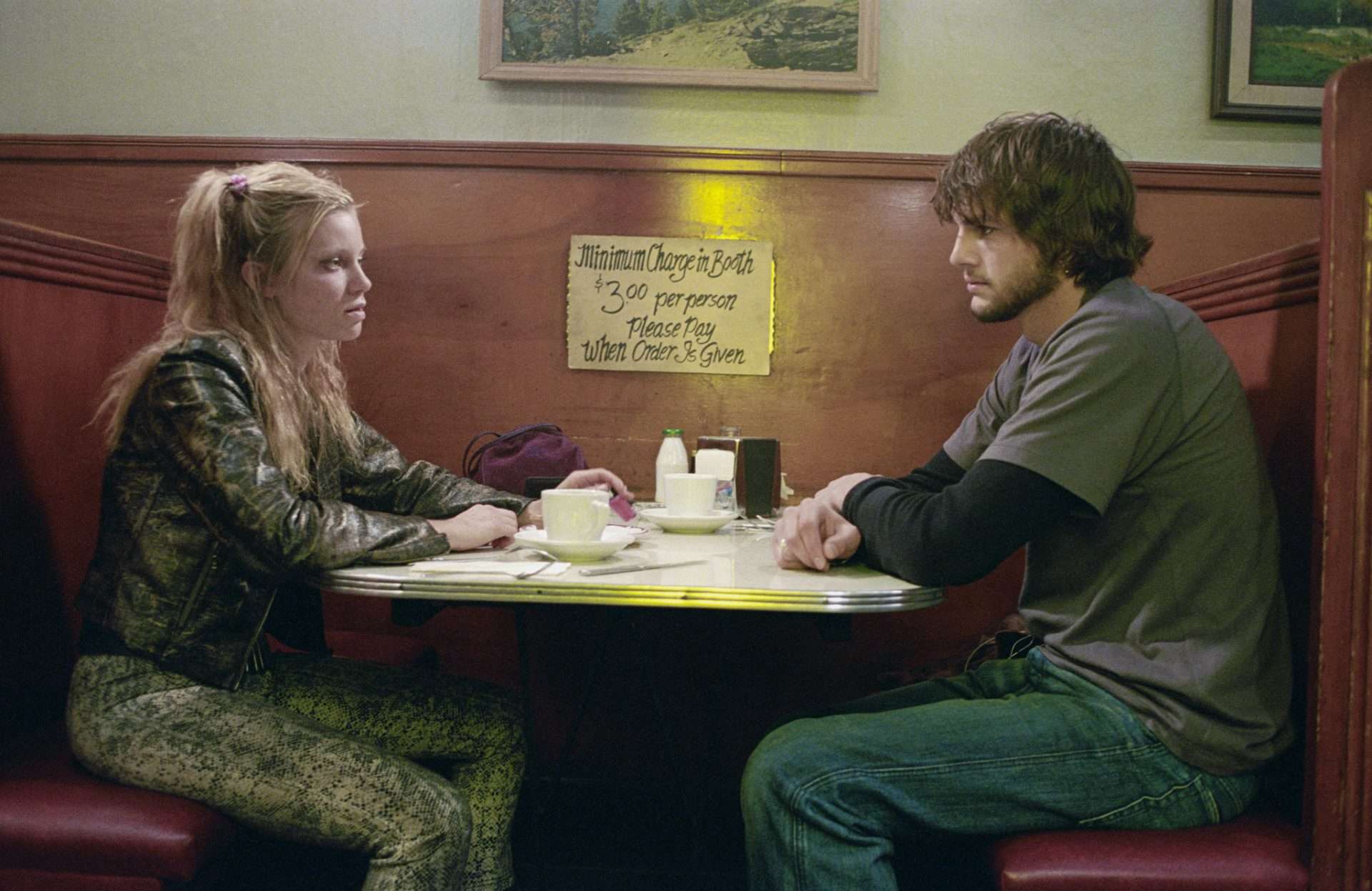
When Evan returns to his dorm, he receives a voicemail from Tommy informing him that Kayleigh has taken her own life. He attends Kayleigh’s funeral from afar and leaves flowers and his note on her grave before returning to his dorm. Distraught, Evan decides to test his theory of altering the past by focusing on the day of the filming. As he recites phrases from that day, Evan finds himself transported back to that moment. When Mr. Miller instructs Kayleigh and Evan to undress for the scene, Evan intervenes and asks Kayleigh to cover her ears.
He then confronts Mr. Miller, warning him that his actions will lead to Kayleigh’s death, and threatens to harm him if he doesn’t stop. As a byproduct, Evan wakes up in a girl’s dorm room next to Kayleigh, both now 20 years old. They share a flash of memories together before walking to class. Evan notices a change in his surroundings: he’s now friends with the fraternity boys who previously bullied his roommate, Thumper, who seems to dislike Evan in this reality.
Why is Evan Sent to Prison?
Evan arranges a romantic dinner for Kayleigh, but their evening is disrupted when they discover someone has vandalized his car. They find a dog collar inside, indicating it’s Tommy’s doing. Kayleigh reassures him that Tommy won’t cause any real harm. But as they walk back to her dorm, Tommy ambushes Evan and attacks him with a bat. Evan defends himself with pepper spray and ultimately strikes Tommy, resulting in his death.
As a result, Evan is sent to prison, where he seeks protection from his cellmate, Carlos. However, Carlos advises him to relocate to avoid abuse. During a visit from Andrea, she gives Evan two of his journals, as the others are in storage. Later, other inmates seize Evan’s journals, but he tears out a few pages to demonstrate his abilities to Carlos.
Did Evan manage to fix his life with the Butterfly effect?
Evan starts recalling memories and reaches the day he drew the disturbing drawing. He sticks both his hands on paper holders and needles to give himself a scar. When he wakes up, Carlos believes him and decides to help. With Carlos’ help, Evan manages to go back to the moment when Tommy is about to burn his dog. He gives Lenny a sharp shard to cut the bag with Crockett to release him. They try to convince Tommy to let the dog go, but Lenny stabs Tommy in the back.
Evan wakes up in his dorm room again, and all the memories start to flash in his mind, making him unconscious. While in the hospital, Evan steals security keys from the doctor and goes to see Lenny. When Evan tries to talk to Lenny, he just stares at the ceiling, but when Evan is about to leave, he asks him if he knows what would happen if he handed the shard to Lenny. Evan replies with a yes, and Lenny tells him that he deserves to be in his place.
Evan revisits the day he met his father. He asks him a way to make things right, but his father tells him it is impossible without destroying a part of himself. He then tells his father that he will try using his powers to make things right, which makes his father lunge at him. After waking up, he decides to visit Kayleigh in his hometown. He asks about her at the diner but realizes she never worked there. He then visits her house and takes her to dinner, but she refuses to believe in his abilities.
Evan returns to his dorm and starts recalling the memory from the day they blew up the mailbox. He warns the mother and daughter to stay away from the mailbox, but Tommy shields them and becomes a hero while Evan gets blown away by the explosion. As he wakes up in his bed, Evan realizes that he lost both his limbs in the blast, and many memories start to flood his mind. Among these memories, he sees that Lenny and Kayleigh are in a relationship.
When Evan and Kayleigh get a chance to spend some time alone, Evan asks her if they could have had a good relationship. Kayleigh replies that Evan was the only reason she stayed with her dad instead of her mom. Evan tells her that nobody could love her like he does. Feeling depressed, Evan attempts suicide, but Tommy intervenes and takes him to the hospital to see Andrea, who is suffering from lung cancer. Evan decides to go back in time to destroy the dynamite, but he fails the first time.
On his second attempt, he reaches the memory of when Mr. Miller tried to shoot a movie. He finds the dynamite near the fireplace and lights it, but Mr. Miller knocks it out of his hand, and Kayleigh picks it up, resulting in her death. Evan then wakes up in a psychiatric ward and is determined to try again. He goes to the doctor’s office to ask for his journals, but the doctor says there are none. At night, Evan sneaks into the doctor’s office and starts writing a goodbye note. A video starts playing on the projector. From here, there are two climaxes: the theatrical climax and the director’s cut climax.
The Butterfly Effect (2004) Movie Ending Explained:
What are two different conclusions to the branched effect.
In the director’s cut, Evan watches the video of his mother giving birth to him and reaches inside the womb. He then strangles himself with his umbilical cord, and Andrea feels a shooting pain. Later, a range of memories flash before him as his friends and family achieve a happy life in his absence. Whereas, in the theatrical climax, when Evan is in the office, a video of him meeting Kayleigh for the first time plays on the screen. He revisits that memory, and when Kayleigh tries to befriend him, he threatens her, causing them to never become friends. As Evan wakes up in his dorm room, his nose starts bleeding as all the memories flood back into his head. In these memories, Kayleigh and Tommy have chosen to live with their mother and have become very successful.
Evan immediately asks Lenny, his former roommate, about Kayleigh, but Lenny responds, “Who’s Kayleigh?” Together, Lenny and Evan decide to burn all the memories and journals from their past. The movie then shifts to eight years later when Evan is seen walking out of a building. He crosses paths with Kayleigh, and she briefly looks at him as if recognizing him but then walks past him.
Read More: 10 Interesting Psychological Thriller Movies You Can Stream on Hulu Right Now
The Butterfly Effect (2004) Movie Links: IMDb , Rotten Tomatoes , Wikipedia , Letterboxd The Butterfly Effect (2004) Movie Cast: Ashton Kutcher, Amy Smart, Eric Stoltz, William Lee Scott, Elden Henson, Logan Lerman. Ethan Suplee, Melora Walters The Butterfly Effect (2004) Movie Genre: Mystery & thriller, Runtime: 1h 53m
Where to watch the butterfly effect.
Similar Posts
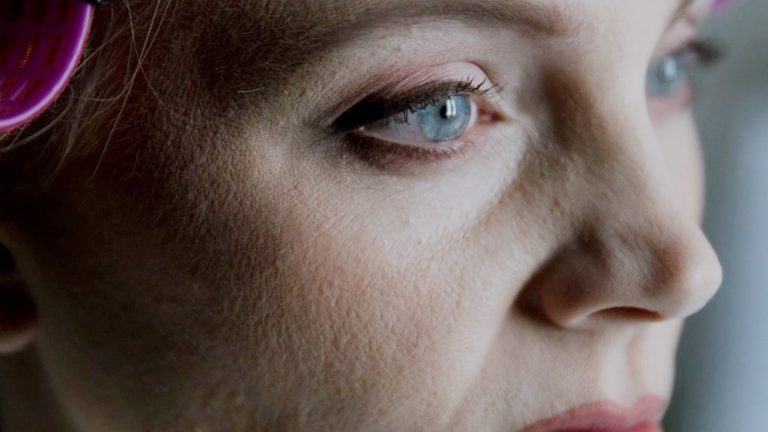
Wild Fire (2023) Movie Review: An uneven tale about sexuality, desire, and the secrets we keep

Sicario (2015): Alice in Cartel-Land
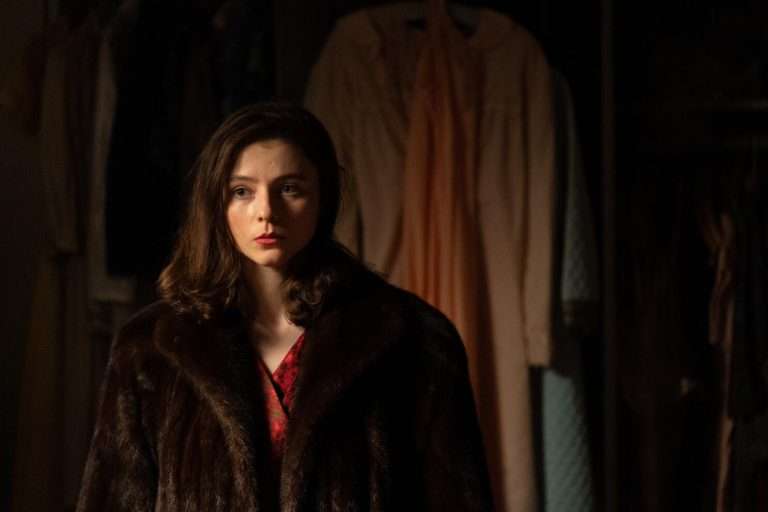
Eileen (2023) Movie Ending Explained: What does Eileen’s Smile At the End of the Movie Mean?
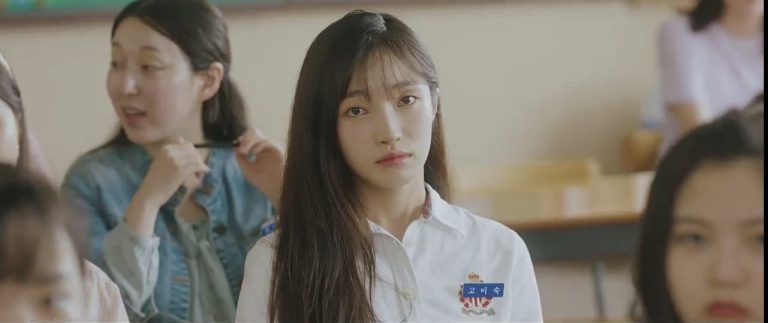
My Perfect Stranger AKA Run Into You (Season 1), Episode 3: Recap & Ending, Explained
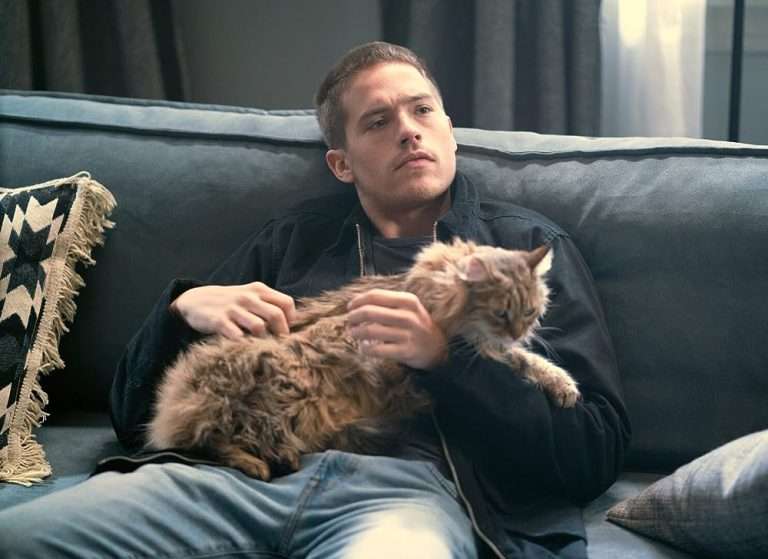
Beautiful Disaster (2023): Movie Ending Explained – Do Travis and Abby end up together?
![the butterfly effect movie essay Beans [2020]: ‘TIFF’ Review – A coming-of-age story set in the backdrop of an armed stand-off](https://www.highonfilms.com/wp-content/uploads/2020/09/Beans-2020-Movie-Review-highonfilms-768x384.jpg)
Beans [2020]: ‘TIFF’ Review – A coming-of-age story set in the backdrop of an armed stand-off
24/7 writing help on your phone
To install StudyMoose App tap and then “Add to Home Screen”
Psychological Analysis of "The Butterfly Effect"
Save to my list
Remove from my list

Psychological Analysis of "The Butterfly Effect". (2016, Jul 02). Retrieved from https://studymoose.com/psychological-analysis-of-the-butterfly-effect-essay
"Psychological Analysis of "The Butterfly Effect"." StudyMoose , 2 Jul 2016, https://studymoose.com/psychological-analysis-of-the-butterfly-effect-essay
StudyMoose. (2016). Psychological Analysis of "The Butterfly Effect" . [Online]. Available at: https://studymoose.com/psychological-analysis-of-the-butterfly-effect-essay [Accessed: 5 Sep. 2024]
"Psychological Analysis of "The Butterfly Effect"." StudyMoose, Jul 02, 2016. Accessed September 5, 2024. https://studymoose.com/psychological-analysis-of-the-butterfly-effect-essay
"Psychological Analysis of "The Butterfly Effect"," StudyMoose , 02-Jul-2016. [Online]. Available: https://studymoose.com/psychological-analysis-of-the-butterfly-effect-essay. [Accessed: 5-Sep-2024]
StudyMoose. (2016). Psychological Analysis of "The Butterfly Effect" . [Online]. Available at: https://studymoose.com/psychological-analysis-of-the-butterfly-effect-essay [Accessed: 5-Sep-2024]
- The Butterfly Effect: A Narrative on Life's Metamorphic Challenges Pages: 5 (1430 words)
- Catcher in the Rye Psychological Analysis Pages: 3 (685 words)
- Psychological analysis of film character Pages: 7 (1885 words)
- Psychological Film Analysis: Silver Linings Playbook Pages: 5 (1317 words)
- Socio-Psychological Analysis in 'Harry Potter and Sorcerers Stone' Pages: 6 (1564 words)
- Psychological Analysis Of The Novel "Opening Skinner’s Box" Pages: 5 (1404 words)
- Robert Redford's Drama Movie , Ordinary People: a Psychological Analysis Pages: 6 (1695 words)
- Formalistic, Sociological, And Psychological Analysis Of The Merchant Of Venice By William Shakespeare Pages: 5 (1445 words)
- Exploring Abigail's Manipulation in "The Crucible": Psychological Analysis Pages: 4 (1148 words)
- Frankenstein: a Psychological Analysis Pages: 2 (587 words)
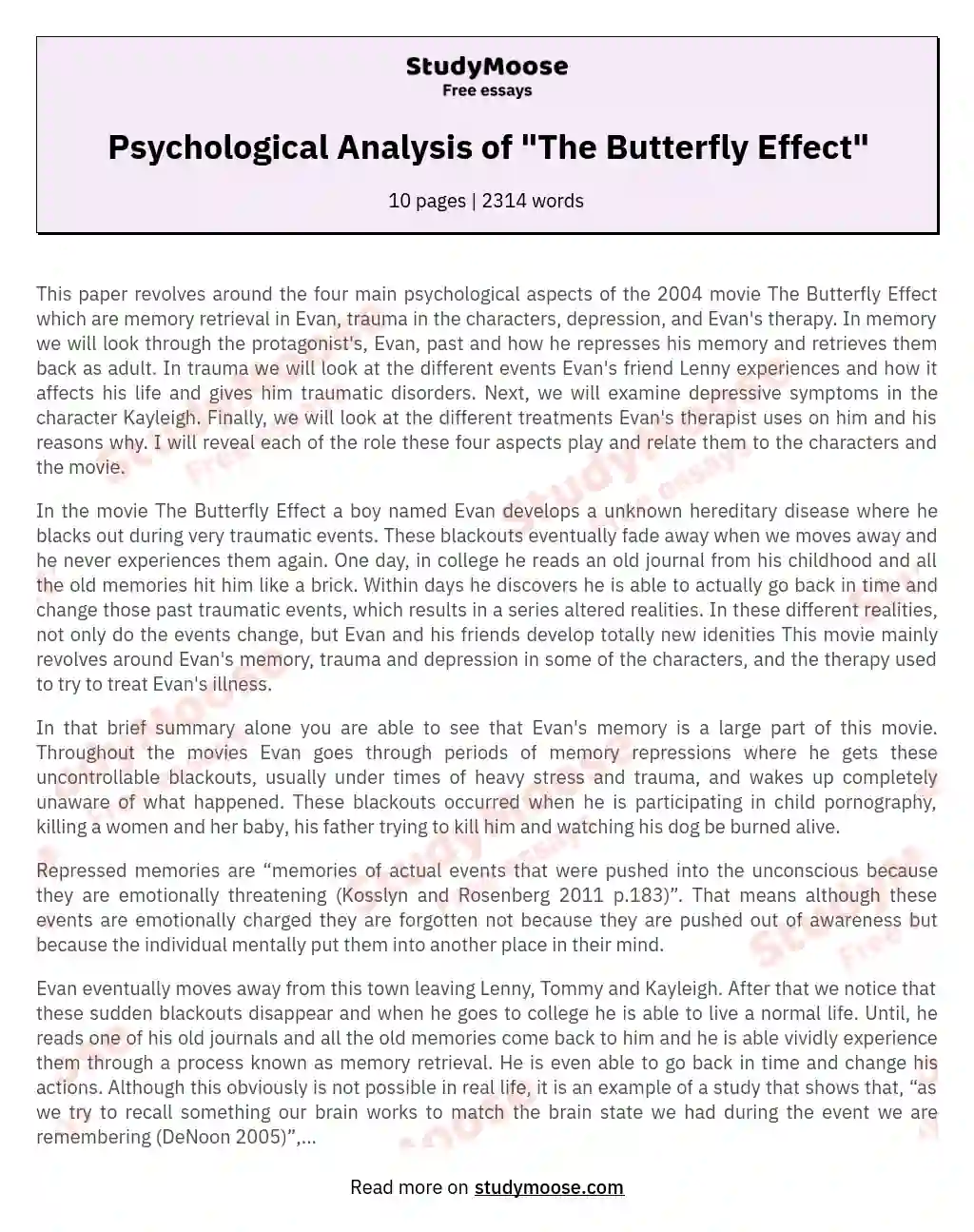
👋 Hi! I’m your smart assistant Amy!
Don’t know where to start? Type your requirements and I’ll connect you to an academic expert within 3 minutes.
The Butterfly Effect
Chaos theory teaches us that small events can have enormous consequences. An opening title informs us that butterfly flapping its wings in Asia could result in a hurricane halfway around the world. Yes, although given the number of butterflies and the determination with which they flap their little wings, isn’t it extraordinary how rarely that happens? “The Butterfly Effect” applies this theory to the lives of four children whose early lives are marred by tragedy. When one of them finds that he can go back in time and make changes, he tries to improve the present by altering the past.
The characters as young adults are played by Ashton Kutcher , as Evan, a college psych major; Amy Smart and William Lee Scott as Kayleigh and Tommy, a brother and sister with a pedophile father; and Elden Henson as Lenny, their friend. The story opens in childhood, with little Evan seriously weird. His drawings at kindergarten are sick and twisted (and also, although nobody ever mentions it, improbably good for a child). He has blackouts, grabs kitchen knives, frightens his mother ( Melora Walters ), becomes a suitable case for treatment.
A shrink suggests that he keep a daily journal. This he does, although apparently neither the shrink nor the mother ever read it, or their attention might have been snagged by entries about how Mr. Miller ( Eric Stoltz ), father of Kayleigh and Tommy, forced them all to act in kiddie porn movies. Evan hangs onto the journals, and one day while reading an old one at school he’s jerked back into the past and experiences a previously buried memory.
One thing he’d always done, after moving from the old neighborhood, was to promise Kayleigh “I’ll come back for you.” (This promise is made with handwriting as precocious as his drawing skills.) The flashbacks give him a chance to do that, and eventually he figures out that by reading a journal entry, he can return to that page in his life and relive it. The only problem is, he then returns to a present that is different than the one he departed from — because his actions have changed everything that happened since.
This is a premise not unknown to science fiction, where one famous story has a time-traveler stepping on a cockroach millions of years ago and wiping out humanity. The remarkable thing about the changes in “The Butterfly Effect” is that they’re so precisely aimed: They apparently affect only the characters in the movie. From one reality to the next, Kayleigh goes from sorority girl to hooker, Evan zaps from intellectual to frat boy to prisoner, and poor Lenny spends some time as Kayleigh’s boyfriend and more time as a hopeless mental patient.
Do their lives have no effect on the wider world? Apparently not. External reality remains the same, apart from minute adjustments to college and prison enrollment statistics. But it’s unfair to bring such logic to bear on the story, which doesn’t want to really study the butterfly effect, but simply to exploit a device to jerk the characters through a series of startling life changes. Strange, that Evan can remember everything that happened in the alternate lifetimes, even though by the theory of the movie, once he changes something, it didn’t happen.
Ashton Kutcher has become a target lately; the gossip press can’t forgive him for dating Demi Moore , although that’s a thing many sensible young men dream of doing. He was allegedly fired from a recent film after the director told him that he needed acting lessons. Can he act? He can certainly do everything that’s required in “The Butterfly Effect.” He plays a convincing kid in his early 20s, treating each new reality with a straightforward realism when most actors would be tempted to hyperventilate under the circumstances.
The plot provides a showcase for acting talent, since the actors have to play characters who go through wild swings (even Evan’s mom has a wild ride between good health and death’s door).
And there’s a certain grim humor in the way the movie illustrates the truth that you can make plans, but you can’t make results. Some of the futures Even returns to are so seriously wrong from his point of view that he’s lucky he doesn’t just disappear from the picture, having been killed at 15, say, because of his meddling.
I enjoyed “The Butterfly Effect,” up to a point. That point was reached too long before the end of the movie. There’s so much flashing forward and backward, so many spins of fate, so many chapters in the journals, that after awhile I felt that I, as well as time, was being jerked around.
Eric Bress and J. Mackye Gruber, the co-writers and directors, also collaborated on “ Final Destination 2 ” (2003), another film in which fate works in mysterious way, its ironies to reveal. I gave that half of a star, so “The Butterfly Effect” is five times better. And outside, the wind is rising …

Roger Ebert
Roger Ebert was the film critic of the Chicago Sun-Times from 1967 until his death in 2013. In 1975, he won the Pulitzer Prize for distinguished criticism.
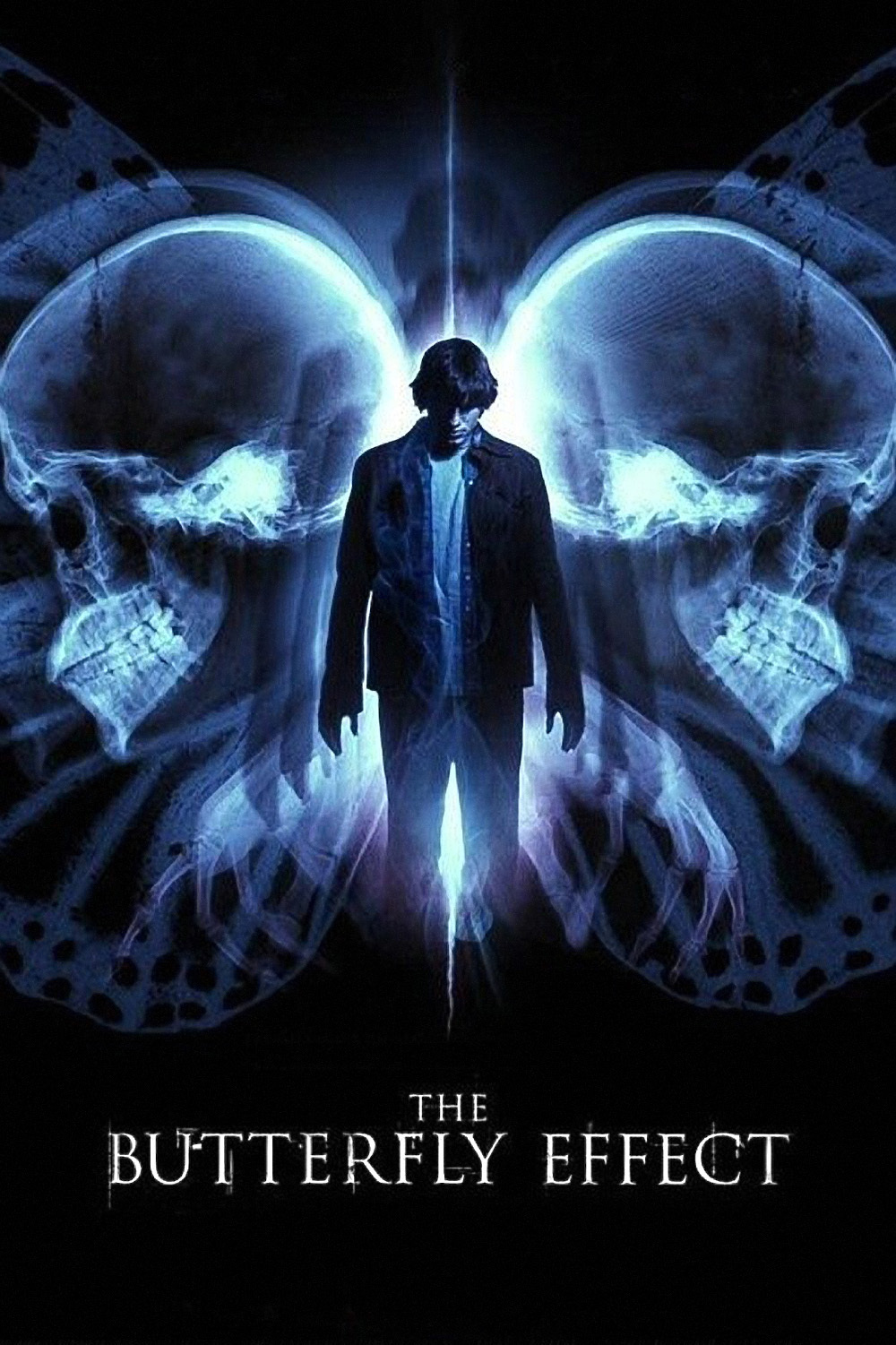
- Ashton Kutcher as Evan Treborn
- William Lee Scott as Tommy Miller
- Melora Walters as Andrea Treborn
- Elden Henson as Lenny Kagan
- Eric Stoltz as George Miller
- Amy Smart as Kayleigh Miller
Written and directed by
- J. MacKye Gruber
Leave a comment
Now playing.

Rebel Ridge
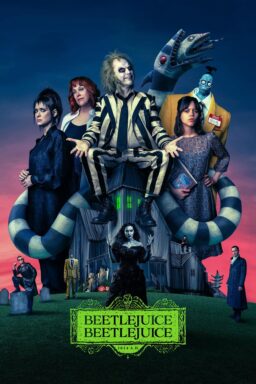
Beetlejuice Beetlejuice

Piece by Piece
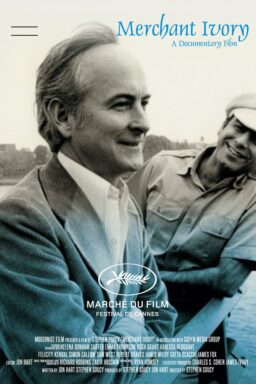
Merchant Ivory

The Deliverance
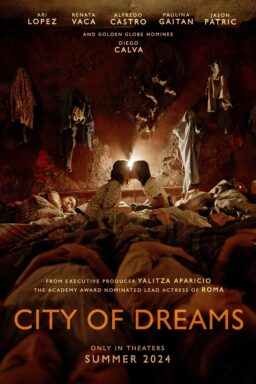
City of Dreams
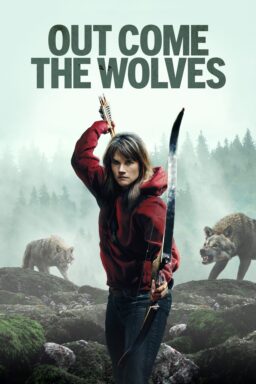
Out Come the Wolves

Seeking Mavis Beacon

Latest articles
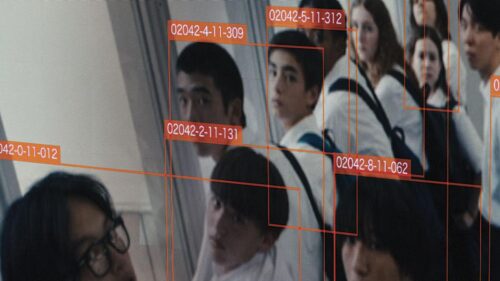
Venice Film Festival 2024: Happyend, Pavements, Familiar Touch

Venice Film Festival 2024: The Biennale College

Telluride Film Festival 2024: Nickel Boys, The Piano Lesson, September 5
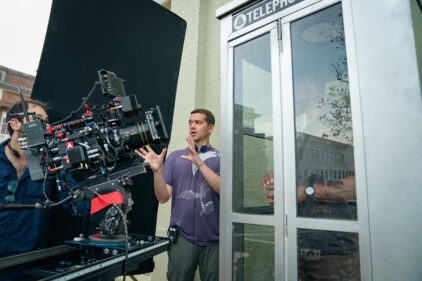
Fight or Flight: Jeremy Saulnier on Rebel Ridge
The best movie reviews, in your inbox.
Stack Exchange Network
Stack Exchange network consists of 183 Q&A communities including Stack Overflow , the largest, most trusted online community for developers to learn, share their knowledge, and build their careers.
Q&A for work
Connect and share knowledge within a single location that is structured and easy to search.
What was the original ending and why was it changed?
The Butterfly Effect (2004) has multiple and very different endings. Specifically there appears to be two factors on the main character's decision:
- Save his girlfriend's life
- Save his girlfriend's life and mother's life.
I found it weird that the first ending would not compromise the other (it's like a happy ending where the viewer doesn't know what happened to his mother or to the main character's "gift")
After checking on the web and discussing with others I am not sure which was the original intended ending .
Is it reported anywhere why the need to dramatically change the ending?
- plot-explanation
- alternate-version
- the-butterfly-effect
- Given the premise - that tiny, seemingly unrelated occurrences can have ripple effects throughout our reality, doesn't it make sense that there would be multiple possible outcomes? – PoloHoleSet Commented Nov 9, 2016 at 21:24
2 Answers 2
There are 4 different endings :
Theatrical Ending:
Evan travels back to the birthday party where he first meets Kayleigh and whispers to her "I hate you and if you ever come near me again I'll kill you and your whole damn family." Kayleigh runs away crying. After a montage of his memories disintegrating, Evan returns to present day in the dorm room with Lenny, and the two of them burn all of Evan's journals. Eight years pass. One day, Evan and Kayleigh (Amy Smart) are walking down a street, going in opposite directions. When they pass each other, they seem to recognize each other for a second but keep walking away.
- Watch Theatrical Ending on YouTube
Alternate Ending 1:
Same as Theatrical Ending , only Evan turns and follows Kayleigh.
- Watch Alternate Ending 1 on YouTube
Alternate Ending 2:
Same as Alternate Ending 1 only Evan and Kayleigh talk to each other.
- Watch Alternate Ending 2 on YouTube
Director's Cut:
At the end, while Evan has barricaded himself in the office, he starts playing a home movie his father made just as his mother was giving birth to him. Evan travels back into his mother's womb and strangles himself with the umbilical cord. Said to be the original ending but, because it did poorly with the screening audience, the theatrical ending was chosen for cinema release.
The Director's Cut has quite a few more additional scenes.
Detailed comparison between Theatrical and Director's Cut
Watch Director's Cut Below:
- 1 Wow, never knew about the directors cut ending (well, didn't know 2 and 3 either, but those aren't that spectacular). That's amazing, thanks for the info. – Napoleon Wilson Commented Nov 27, 2012 at 12:24
- Great answer! Didn't know so many endings existed and you've got them nicely covered with images... +1 – Roshnal Commented Nov 27, 2012 at 13:47
- do you know which of these was the original script? – quinestor Commented Nov 27, 2012 at 15:44
- 4 weird, i've only seen the director's cut, not the theatrical. – DForck42 Commented Nov 27, 2012 at 19:39
- 4 @quinestor - Did you overlook the last sentence in the Director's Cut quote? The DC actually has a lot more than just a different ending. You also learn that Evan inherited his "ability" from his father, and that his mother had 2 miscarriages before him, implying that those children went through something similar as Evan and eventually made to the same decision: not to get born in the first place. – Oliver_C Commented Nov 28, 2012 at 10:34
I don't quite get what you meant by,
Anyway, the way I understood is this:
The original ending was the ending which Evan was in a psychiatric hospital- he is in a really depressed state as he is fully aware that it is he who killed his girlfriend, Kayleigh. What the doctor said was true- Evan was making alternate realities in his mind to escape his guilt about killing her (he throwed the dynamite at her father, but it landed beneath her).
But then he steals the earliest home-movie tape in which he had met Kayleigh for the the first time in his life (the real one)- at a party. He then "travels" into the scene (for real) and then blames Kayleigh (says he hates her, etc, etc.), thus avoiding ever meeting her and playing with her- and the dynamite scene and child abuse (by her father) would never have happened in the first place. And consequently, Evan would not be crazy, his other friends would be good in life, and he would have led a normal college life.
This is not based on real facts, but is the way I interpreted the movie and understood it.
- hey thanks!. What I meant with the compromise is that in one ending it seems that Evan's ultimate sacrifice seems completely necesary to save all, while in the other: the one you post, only sacrificing his relationship seems necesary. Was this ending the one shown in the movie theaters? – quinestor Commented Nov 27, 2012 at 8:08
- OK :). But what exactly was the surroundings of "...ultimate sacrifice seems necessary to save all..." part? Can't remember. And I can't help you with what was shown in movie theaters- I only watched it from my PC. – Roshnal Commented Nov 27, 2012 at 9:39
- Oh i meant that he kills himself while in the fetus because him being alive destroy his mother and girlfriend's lives. While in the other ending him being alive is only a problem if he ends up having a relationship with his GF – quinestor Commented Nov 27, 2012 at 11:03
- I've not seen the scene you told (the one where he's killing himself in his mother's womb). But the other answer (by Oliver C) states that its the director's cut . He has a nice summary of endings... – Roshnal Commented Nov 27, 2012 at 13:46
You must log in to answer this question.
Not the answer you're looking for browse other questions tagged ending plot-explanation alternate-version the-butterfly-effect ..
- Featured on Meta
- Announcing a change to the data-dump process
- Bringing clarity to status tag usage on meta sites
- Please unlock and reopen closed ID questions in line with our community...
Hot Network Questions
- Testing if a string is a hexadecimal string in LaTeX3: code review, optimization, expandability, and protection
- Invest smaller lump sum vs investing (larger) monthly amount
- Does an unseen creature with a burrow speed have advantage when attacking from underground?
- Applying for different jobs finding out it is for the same project between different companies
- Word for when someone tries to make others hate each other
- Can a quadrilateral polygon have 3 obtuse angles?
- Creating Layout of 2D Board game
- Can Christian Saudi Nationals visit Mecca?
- Can it be acceptable to take over CTRL + F shortcut in web app
- How best to cut (slightly) varying size notches in long piece of trim
- What should I do if my student has quarrel with my collaborator
- Kitchen half-wall/pony-wall receptacle height
- What's "the archetypal book" called?
- Why am I having problems starting my service in Red Hat Enterprise Linux 8?
- Asked to suggest referees 9 months after submission: what to do?
- Is there a way to assign multiple meshes to an object and switch between them?
- Why are IBM's basis gates not linearly independent?
- Is this schematic ready to be made into a circuit?
- Is it possible to travel to USA with legal cannabis?
- Why is notation in logic so different from algebra?
- In Lord Rosse's 1845 drawing of M51, was the galaxy depicted in white or black?
- Whats the safest way to store a password in database?
- Alternative to a single high spec'd diode
- Is loss of availability automatically a security incident?
Home — Essay Samples — Science — Butterfly — Evan’s Flashbulb Memory in “The Butterfly Effect”

Evan's Flashbulb Memory in "The Butterfly Effect"
- Categories: Butterfly
About this sample

Words: 642 |
Published: Dec 12, 2018
Words: 642 | Page: 1 | 4 min read

Cite this Essay
Let us write you an essay from scratch
- 450+ experts on 30 subjects ready to help
- Custom essay delivered in as few as 3 hours
Get high-quality help

Verified writer
- Expert in: Science

+ 120 experts online
By clicking “Check Writers’ Offers”, you agree to our terms of service and privacy policy . We’ll occasionally send you promo and account related email
No need to pay just yet!
Related Essays
2 pages / 717 words
6 pages / 2821 words
2 pages / 930 words
1 pages / 323 words
Remember! This is just a sample.
You can get your custom paper by one of our expert writers.
121 writers online
Still can’t find what you need?
Browse our vast selection of original essay samples, each expertly formatted and styled
Butterflies have long captivated the imagination of people around the world with their delicate beauty and graceful flight. These enchanting creatures, known for their vibrant colors and intricate patterns, serve as a symbol of [...]
Baars, M. A., & Kraaijeveld, K. (2019). Butterflies and climate change. Current Opinion in Insect Science, 35, 96-101.Beck, J., & Zulka, K. P. (2019). Butterfly gardens: creating habitats for backyard wildlife. Virginia [...]
After much thought, one annoyance came to mind as my pet peeve. As much as some men thinking they are Gods gift to women and some women thinking they are the most beautiful women to ever walk the earth annoys me to no end, [...]
In his memoir Catching The Big Fish, David Lynch reflects on himself as a director. Additionally, he discusses various arts outside of cinema. Though he provides insight into his other arts, an analysis on how these arts overlap [...]
Canis lupus familiaris is now more physically diverse than it ever was. Scientists are still clueless as to how dogs nowadays have little to no resemblance to wolves, their ancestors. Somewhere along the way, wolves lost their [...]
A Historical Analysis of Horses Throughout The Mongolian Empire. It was commonly said of the Mongolians that “to see a Mongolian without a horse is like a bird without the wings.” The horse was integral to the success [...]
Related Topics
By clicking “Send”, you agree to our Terms of service and Privacy statement . We will occasionally send you account related emails.
Where do you want us to send this sample?
By clicking “Continue”, you agree to our terms of service and privacy policy.
Be careful. This essay is not unique
This essay was donated by a student and is likely to have been used and submitted before
Download this Sample
Free samples may contain mistakes and not unique parts
Sorry, we could not paraphrase this essay. Our professional writers can rewrite it and get you a unique paper.
Please check your inbox.
We can write you a custom essay that will follow your exact instructions and meet the deadlines. Let's fix your grades together!
Get Your Personalized Essay in 3 Hours or Less!
We use cookies to personalyze your web-site experience. By continuing we’ll assume you board with our cookie policy .
- Instructions Followed To The Letter
- Deadlines Met At Every Stage
- Unique And Plagiarism Free
- Cast & crew
- User reviews

The Butterfly Effect
- Evan Treborn suffers blackouts during significant events of his life. As he grows up, he finds a way to remember these lost memories and a supernatural way to alter his life by reading his journal.
- As a child, Evan Treborn was afflicted with blackouts where he would be in one place one minute and then another the next, remembering absolutely nothing in-between. Now all grown up and in college, he decides to read from an old journal he wrote to remember stuff that might have happened in the in-between, and suddenly finds himself back at a certain point in his life. He realizes that those blackouts he had were actually empty spaces of time he had to fill up later in life. Attempting to use this ability to undo unpleasant past events, Evan starts to find that every time he goes back and tries to fix things, he ends up making everything worse. How can he prevent more tragedies from happening and save the one girl he ever loved, Kayleigh (Amy Smart)? — Lenny at 13
- Evan Treborn grows up in a small town with his single, working mother and his friends. He suffers from memory blackouts where he suddenly finds himself somewhere else, confused. Evan's friends and mother hardly believe him, thinking he makes it up just to get out of trouble. As Evan grows up he has fewer of these blackouts until he seems to have recovered. Since the age of seven he has written a diary of his blackout moments so he can remember what happens. One day at college he starts to read one of his old diaries, and suddenly a flashback hits him like a brick! — Anonymous
- In the year 1998, Evan Treborn (Ashton Kutcher), who suffered severe sexual abuse (sexual abuse by the father of his girl friend Kayleigh from school) and traumas (death of his mentally ill father, in front of his eyes) as a boy (played by Logan Lerman) and a teenager (played by John Patrick Amedori), blacks out frequently, often at moments of high stress. His mother has him examined by a doctor, but all the tests fail to spot the issue. The doctor suggests that Evan keep a journal to help him with the blackouts. Evan has the habit of backing out just before the most unpleasant events in his life, including the time when his girlfriend Kayleigh, her brother Tommy & their friend Matt stole an explosive from Kayleigh's father stash & tried to explode as a prank in a neighbors mailbox, which somehow led to a serious injury to Matt. Evan's mom tries hypnosis, but Evan simply gets nosebleeds when forced to remember the blackout portions of his life. Later Tommy finds Kayleigh kissing Evan & takes it out on Evan by burning Evan's dog alive. Evan is blocked out on that event as well (right after the point when he tries to intervene to try & save his dog). Tommy beats up Evan badly & prompts Evan's mom to change towns. While entertaining a girl in his dorm room, he finds that when he reads from his adolescent journals, he travels back in time, and he is able to "redo" parts of his past, thereby causing the blackouts he experienced as a child. He also remembers that during the mailbox incident, the resident of the house (a mom with her baby) approached the mailbox while the explosive was still on trigger, & she opened the mailbox just as it exploded, killing them both. Matt tried to save them & was seriously injured. There are consequences to his choices, however, that then propagate back to his present life: his alternate futures vary from college student, to prisoner, to amputee. His efforts are driven by the desire to undo the most unpleasant events of his childhood which coincide with his mysterious blackouts, including saving his childhood sweetheart Kayleigh (Amy Smart) from being molested by her father (Eric Stoltz) and tormented by her sadistic brother Tommy (William Lee Scott). His first attempt to alter reality is when he goes back to the time when Kayleigh's father sexually abused him & her by making a soft porn movie of them. He "abuses" Kayleigh's father & gets him to realize the error of his ways. He wakes up in an alternate reality, where he is married to Kayleigh & instantly gets a huge headache where all the "new" memories of his alternate past come back to him. In this reality, Kayleigh was spared by her dad, but the dad took all of his sexual frustrations out on Tommy. Now Tommy is out of Juvi & is hunting to scare Evan away from Kayleigh. When Tommy attacks, Evan retaliates & ends up killing Tommy & goes to jail. In jail he is attacked by Tommy's Juvi buddies, & this time Evan uses the journal to travel back to the time when Tommy burnt Evan's dog alive. He convinces Matt to pick a piece of metal to cut open the ropes of the sack in which his dog is trapped. Evan talks Tommy into sparing his dog by saying that he would go to Juvi & he wouldn't want to leave Kayleigh alone with his dad. Tommy relents & releases the dog, when Matt kills Tommy with the metal shard. Kayleigh gets a gash on her face from the same metal, when she tries to save Tommy. Evan wakes in an alternate reality in his dorm room again. In this reality, Tommy is dead & Matt is institutionalized. Evan meets Matt in the hospital & Matt blames Evan for putting the metal shard in his hands, saying that EVan knew fully well that Matt would kill Tommy. Kayleigh is ugly due to a huge gash on her face & turns out to be a prostitute. Now Evan goes back to the time of the dynamite exploding & tries to warn off the woman and the baby approaching their mailbox. He gets close to the mailbox & ends up saving their life, but when he wakes up he has lost his arms & Kayleigh is having sex with Matt. Evan is distraught that in this reality he has even lost Kayleigh. He asks Kayleigh how she feels about him & she tells Evan that she hated her dad, but didn't opt to go with her mom (after their divorce) because she wanted to be with Evan. Thats when Evan realized that the only way to "fix" everything was to push Kayleih away in the first place. The actions he takes, and those he enables others to take during his blackouts, change the time-line in the new future where he awakes. As he continues to do this he realizes that even though his intentions are good his actions have unforeseen consequences. Moreover, the assimilation of dozens of years' worth of new memories from the alternate time-lines causes him brain damage and severe nosebleeds. Ultimately, he decides that his attempts to alter the past end up only harming those he cares about. But Evan realizes that the main cause of everyone's suffering in all the different time-lines is himself. At the conclusion of the film, Evan purposely travels back in time one final time to the first day he met Kayleigh. By scaring her away, he makes sure that she is never a part of his life, and thus finally succeeds in saving her life. He then destroys all of his journals and memories so that he is not ever tempted again to make any more changes. The film ends eight years in the future with Evan leaving an office building in Manhattan and passing Kayleigh on a crowded sidewalk. They alternately pause and turn after spotting and passing each other. After a moment of hesitation, Evan lets her walk away without speaking to her.
Contribute to this page
- IMDb Answers: Help fill gaps in our data
- Learn more about contributing
More from this title
More to explore, recently viewed.
The Butterfly Effect
"When the monarchs hang clustered together, paralyzed by the cold, they are clasped to each other, holding the heat between them. They wait for the sun to warm them."
[Metamorphosis] It was cold in Maine. Cold. And the snow was heaped in dirty piles on the side of the road. And the sidewalks were icy. And it got dark at 4:30 in the afternoon.
It was the dead of winter, and I wanted out, so I flew to California—to Pacific Grove, aka Butterfly Town, USA, to see the monarchs. It was a journey home, really, though I had never been there.
I grew up in a box-shaped house on a well-manicured lawn in the suburbs of a mid-sized Canadian city in Ontario. Across the road and abutting the river was a patch of city land, untended, wild, a field of tall grasses flecked with milkweed and Queen Anne’s lace. There, I discovered my first monarch caterpillar. I was 9 years old, and I had never seen anything like it. Boldly ringed in concentric stripes—black, yellow and white—it was stretched out on a milkweed leaf, eating. I plucked it off, held it in my hand, touched it with my fingers. Its skin was smooth, leathery. It did not roll up in a ball. It did not seem afraid. Docile. I broke off the milkweed near the top and carried my find home.
I scoured the fields in search of more. I filled jars with milkweed and caterpillars. I pounded nail holes in the lids. I spent hours watching them.
They ate voraciously. I could see their mandibles working. I could see the chunks they took out of the leaves, bite by bite. They grew fast, and before I knew it, they were climbing to the lids of their jars. They spun small mounds of silk and attached themselves to the mounds and hung there in the shapes of J’s for a long, long time. And then, when the moment was right, they split the skins on their backs, wrestled with themselves and turned inside-out, and, suddenly, there they were, something wholly different: an emerald green chrysalis with little golden flecks and a gold crown.
Miraculous.
They would hang for days, for what seemed like forever, and nothing changed. And then one day, I could see the darkening. The butterfly was forming. Soon, I could see the outline of a wing. The orange. The black veins. The white polka dots.
The waiting for what would come next. … It seemed interminable.
I didn’t want to miss it.
[Migration] When a monarch butterfly sets off on its journey to its winter destination, it does not have to pay a $100 fee because its suitcase is 25 pounds over the limit. It does not have to take off its shoes, its watch, its coat and scarf, in case of bombs. It does not have to put its carry-ons in the overhead compartment or under the seat in front of it. It does not have to watch the flight attendant demonstrate how to put on a seatbelt or an oxygen mask. It does not worry about going down. It does not worry.
It’s 11 degrees Fahrenheit and a cold, clear day when my flight departs, and it’s hard to imagine what a monarch does experience on its own winged migration. It experiences, certainly, the view. It experiences a silence I cannot imagine. It experiences, I think, a certain peace, a free tilting. It knows nothing but how to ride the waves of the wind.
It is the opposite of me, crammed here in the stale air of this “Freedom Air” Embraer EMB-45.
[Habitat] I have a carbon filter mask. If I were to give it a name, I think it would have a male name. Tom. Something strong and protective.
My mask is battleship gray. It shields me from perfumes and colognes, air fresheners, cleaning products, pesticides, fumes from fresh paint. I carry it in a baggie in my purse, and I take it out now, on this airplane, and strap it on.
I wear it when I can feel the headache coming on. When it hits, it feels as though my brain has swollen inside the cradle of my scalp. A fog rolls in. My capacity to juggle a number of thoughts at once, an ability most people take for granted, dwindles. It alarms me when this happens, when my brain gives way.
I have it easy compared to some people. I know people who suffer seizures when exposed to chemicals. Closed airways, joint and muscle pain, nausea, insomnia, disabling fatigue. Panic attacks, mood swings. I know people who could never hazard the bad air on planes. Some of them live in ceramic trailers in the deserts of Arizona. Some of them are homeless; they live in their cars or tents. They can’t find anyplace safe to breathe. They can’t find habitat.
We call ourselves “canaries in the coal mine.” We have multiple-chemical sensitivity, and our numbers are growing.
[Butterfly Town, USA] Everywhere, all over the little town of Pacific Grove, population 15,522, there are butterflies. And not only the real live fluttering kind: There’s a monarch emblem in bas-relief on the Chamber of Commerce plaque hanging at the Butterfly Grove Inn; there are 22 wooden monarchs of various sizes adorning the town’s Shell station; even the bakery’s cookies come in the shape of monarch butterflies. This place, this magical little place, is indeed Butterfly Town, USA.
I did not know, when I was 9 years old, that it would come to this. I didn’t know that the magic would stay with me, all these 30 odd years. That I would fly across the country to see the monarchs. That I would finally—or ever—get to see the overwintering monarchs clinging together in their clusters of thousands.
[Torpor] When the monarchs hang clustered together, paralyzed by the cold, that is called “torpor.” They are clasped to each other, holding the heat between them. They wait for the sun to warm them. You wouldn’t know they are so beautiful, hanging in the trees like dead leaves. Wings closed, their brilliance is disguised. They wait for the mercury to hit 55 degrees, and then they open their orange wings to the sun. Some of them flutter aloft; others stay together, warm and close in their safe clusters. They cleave to each other like family, like best friends, like a community.
The earliest record of the monarchs in Pacific Grove dates back to 1875, the year the town was established as a Methodist resort, when several hundred people first assembled there in worship. But as far as anybody knows, monarchs have been migrating to Pacific Grove for thousands of years. It is their home.
As recently as 1997, there were 65,000 monarchs overwintering in a little 2.7-acre grove of eucalyptus trees behind the Butterfly Grove Inn. When I am there in early January 2008, however, we count only 4,000. It is a bad year for monarchs.
In fact, annual counts show the monarch populations all over California in a rapid downward spiral. What is happening to the monarchs? Why are their numbers plummeting?
[The Butterfly Lady] In 1987, Ro Vaccaro was a high-powered secretary at a high-powered law firm in Washington, D.C. She could type 130 words a minute. She typed for four lawyers and answered the phone for nine. She made a good living.
But four years earlier, Ro had been diagnosed with lupus, and her symptoms—joint pain, sensitivity to touch and depression, to name a few—were flaring. It had gotten so bad she had to wear braces on one arm and one leg to get around, to keep going. The stress was aggravating her symptoms. She worked in a 12-story building, and she was thinking of jumping off it.
One day, her sister Beverly called. Beverly knew how butterflies buoyed her sister. Twelve years earlier, at an estate auction, Ro had found her first butterfly—in the shape of a beautiful pin. She was in the middle of a divorce at the time, and she told Beverly, “I feel better just holding it.” In that moment, Ro Vaccaro was transformed.
So when Beverly learned of the Pacific Grove monarchs, she called her sister and suggested they make a pilgrimage.
That October, the sisters found themselves celebrating the butterflies’ return with the rest of the town at its annual Butterfly Parade, a Pacific Grove tradition since 1939. There were all the kindergarteners decked out in their bright orange monarch wings. There were all the town’s children dressed in costume, marching down Lighthouse Road. There were the school marching bands, the baton twirlers. Monarch cookies! Monarch cinnamon rolls! There were all the happy people, celebrating the return of the monarchs.
Ro was touched by the magic. She knew she needed to come back to this place.
A year later, she did just that. And when she looked up into the butterfly trees, she told her sister it was like a cathedral. Later, she wrote, “They are nature’s stained-glass windows, flying high between us and the sun.”
She found a job there and took a $10,000 cut in pay. Appointing herself Pacific Grove’s first butterfly docent, she joined a small cluster of monarch aficionados, and, together, they organized Friends of the Monarchs, an education and advocacy group. Many years later, one February, she told a National Public Radio (NPR) reporter her story (which you can hear for yourself at http://www.npr.org/templates/story/story.php?storyId=4498763):
I surprised even myself by sending my letter of resignation by Federal Express. I said, ‘Consider my two-week vacation your two-week notice. I’m moving to live with the butterflies.’ And I did. As you can see, there’s no brace on my leg, there’s no brace on my arm, and I haven’t wiped this silly grin off my face since I got here.
[Migration] How do they know where to go? How is it that they trace the same route, the great-great-great-grandchildren, year after year, and end up in the selfsame trees? Scientists have found 40 genes that help monarchs use the sun as a compass to guide them to warmer climes. Still, it seems to me there is mystery in it.
It’s possible that some of the monarchs I raised as a girl migrated down the coast and all the way to Mexico. East Coast monarchs flock to Mexico by the millions, as they have for thousands of years. Until recently, only the Mexican locals knew about the magnificent “magic circles” where the butterflies overwinter. There, millions of monarchs hang from the oyamel firs—Latin name: “Abies religiosa.”
They fly about 12 miles per hour, 46 miles a day and as high as 4,000 feet. They migrate as far as 2,200 miles. In early November, millions of monarchs stream into Mexico.
On Nov. 2, my birthday, Mexicans celebrate “Dia de los Muertos,” Day of the Dead, honoring friends and relatives who have passed on. In Michoacán, where the monarchs come to roost, the locals say the spirits of their beloved return in the shape of bright, fluttering butterflies.
The locals call the butterflies “las palomas,” which translates as “the doves” or, according to Robert Pyle in “Chasing Monarchs,” as “the souls of lost children.”
[Diapause] There are approximately 200 roosting sites along the coast of California. None of them attracts the millions of monarchs that the Mexican sites see. One or two may count as many as 100,000 in a good year. Pacific Grove averages 20,000. The monarchs cluster there for five months, arriving in time to be fêted at the annual butterfly parade, then mating and departing around Valentine’s Day. These butterflies live as long as eight months, much longer than the summer generations, which enjoy the bright flowers and summer breezes for a mere four or five weeks. They are in a state of diapause, these migrating monarchs: Their reproductive functions are switched off. They are conserving their energy. They are waiting for the right moment.
Around Valentine’s Day, as milkweed starts poking through the earth north and east of Pacific Grove, something changes in the small enclave where the monarchs have spent the winter. The butterflies come to life. There’s energy in the air.
Here is how Ro Vaccaro, the Butterfly Lady, described it on the Valentine’s Day 2005 NPR broadcast:
They chase in spirals up into the sky, and there are chases going on all over the grove as the male butterflies try to choose their Valentine sweethearts. And when he finds the girl that he thinks would be just perfect, he zooms in front of her, and he sprinkles her with this wonderful perfume, and she is just dazzled. And he grabs her in midair with his feet, and so, like a little maple seed, they come twirling down out of the sky. He strokes her body, and then he puts his head right down next to hers, and it looks just like he’s whispering sweet things in her ear. But he’s going to trick her. He stands on his head and flips her, and if he does it correctly, he’ll have the abdomens aligned, which is the only way he can make the connection. Then she becomes very docile, and she folds her wings together. He runs two or three steps. He lifts her up underneath his body, and he carries her all the way up to the top of the trees where they’ll be the warmest, and they’ll stay together till the sun comes up the next morning.
[Chrysalis] One day this past summer, at the park where I take my dog, I spotted a monarch fluttering around a milkweed plant. I stopped and watched. The butterfly dropped down to the top leaf, touched the tip of her abdomen to it and then flew off. I bent over the leaf and beheld something I had never seen in all my years of monarchs: an egg, gleaming like a small gem.
The butterflies lay them one at a time—400 in all—on milkweed all along the migration route north. They mate repeatedly. Each egg is sired by the female’s most recent mate. Each is fertilized only when she deposits it on a milkweed leaf. Only milkweed. Nothing else will do.
When the caterpillar hatches, three to seven days later, it is 1/25th of an inch long. Tiny. Its first meal is the egg it comes from. Then, the fine, hairlike filaments of the milkweed. Finally, as soon as it is large enough, it begins its leaf-feast. It eats and eats. It’s as though the monarch caterpillar were born to eat. It grows 2 inches in two weeks, fattens to 2,700 times its birth weight. It outgrows its skin four or five times and molts to accommodate its expanding girth.
And then, one day, it is time. Who knows how the caterpillar decides? It attaches a little silk fastener to the underside of a leaf. It pierces the silk with its “cremaster”—a small, hooklike appendage at the end of its body—and wriggles hard to make sure the connection will hold. It hangs … still … in the shape of a J, and then, when the moment is right, it splits the skin on its back, miraculously transforming itself into an emerald green chrysalis with a crown of gold.
[Mystery] What happens inside a chrysalis?
One day, I decided to find out. Nine years old and aching with curiosity, I took one of my chrysalides to the side of the house and set it down on a large rock. I held it gently with my thumb and forefinger as I cut into it with my jackknife.
No butterfly, no caterpillar: just black ooze.
I’d made black ooze out of something that could have become a butterfly.
What I didn’t know, what I was trying to find out, was what Kathryn Lasky describes in her lovely little book, “Monarchs”: “The body of the caterpillar melts away into a solution of transforming cells and tissues.”
Something magical happens inside.
[Eclosion] It hangs, this gem of nature, for nine to 15 days. When it is almost ready, the “imago,” or butterfly, can be seen in outline. The orange wing, the black veins, the white spots—they darken. The chrysalis is now translucent.
Finally, one day, in one small moment, the butterfly breathes. Its intake of air splits the chrysalis open. This is called “eclosion,” when the butterfly emerges from its chrysalis. It hangs there, stunned, perhaps, by its new form. The world looks different through its new eyes. Its abdomen is fat with hemolymph, which it pumps through the veins into its wings.
[Flight] A 9-year-old girl is closer to the ground. She sees things up close. She watches. She waits for miracles to happen. And sometimes, when she is really lucky, she witnesses one with her very own eyes. The chrysalis cracks open. The monarch, fat and wet and crumpled, bursts into the world.
A 9-year-old girl takes the time to lie down on the burnt orange rug in her parents’ living room, holding the new monarch on her finger above her. It clings to her. It hangs, drying. Her arm gets tired, but still, she holds the butterfly aloft. She wants to watch its wings unfurl. She wants to see its abdomen slim. She wants to watch it get strong.
When it starts to open and close its wings, it is almost ready for flight. The girl stands up. The butterfly clings to her hand. Carefully, gently, she walks out of the living room, pushes the screen door open, carries her monarch to the middle of her weedless, grassy yard. She holds her hand out to the sky.
She expects the monarch to fly away in an instant, glad to be set free. But it clings to her hand for a long time, opening and closing its wings, waiting. And then, suddenly, it lets go. It lifts itself up into the blue sky and flutters off into the distance and out of sight, leaving the girl down below with her hand over her brow, shielding her eyes from the sun.
[Microclimate] Ro Vaccaro decided the butterflies needed an advocate. So, she began showing up at city council meetings, using the three-minute public comment period to talk about the butterflies. Soon, everybody was calling her the “Butterfly Lady.” It was here, at these meetings, that she first laid eyes on Mrs. Edna Dively, the woman who owned the Butterfly Grove Inn and the land beside it—the magical place where the monarchs roosted every year. Mrs. Dively was fighting for permission to develop her property. She wanted to build houses and an apartment building. And one day in 1989, the city granted her wish.
Mrs. Dively swore that she had no intent to take down the butterfly trees, that she would build around them. But Ro Vaccaro was dubious. Any change in the microclimate might make the monarchs decide the grove was no longer fit for their needs.
So Ro Vaccaro set about to stop Mrs. Dively.
[Chrysalides] I can’t help it. When I see milkweed, I look for monarch caterpillars. And when I find them, my heart leaps with that familiar joy and excitement, and the impulse to take them home is too strong to deny. One year, long before I flew to California to see the monarchs, I found three caterpillars in the park and brought them home. Despite all my best intentions, I killed every one. Each died in a different stage of metamorphosis. The first, a caterpillar, got sluggish and simply stopped eating. The second died with only a little triangle of green on its back where the splitting had begun. I found it, finally, hanging vertically, its J depleted: done. It simply didn’t have the strength to complete the transformation. The last died in chrysalis. It simply turned black. No orange of the wings, just black, and finally, I gave up waiting and took it outside, laid it in a pile of brush.
The next year, I found two caterpillars munching away on separate leaves of the same milkweed. My heart leapt. Then I hesitated. What if I had become, somehow, an angel of death for monarchs? I should not take these caterpillars, I thought.
I uprooted the entire milkweed and brought it, and them, home.
What could it be? What was killing my monarchs? Was it my loss of innocence—the simple fact of my adulthood—that left me incapable of supporting the magic to completion? Or was it something more sinister?
I built a screened cage for them. I avoided city milkweed. I doted. A few days later, both caterpillars hung themselves in J’s and turned into green chrysalides. I waited. I waited. And once again, the chrysalides turned black.
[Memorabilia] She saved monarch memorabilia the way a mother saves all of her firstborn’s artwork and school assignments. Boxes and boxes of letters, handouts and newspaper clippings. If it had to do with the monarchs of Pacific Grove, Ro Vaccaro put it in a box and kept it.
“I wear a butterfly every day, at least somewhere—but usually multiple butterflies,” she told the NPR reporter. “I have a butterfly watch, butterfly earrings, butterflies on my shoes and socks.”
She had monarchs on her hat, monarch pins and buttons and patches on her coat. She decorated her house with them. The walls, the pillows, the rugs, the shower curtain. And she blazoned her car with bumper stickers about saving them.
Ro Vaccaro, the Butterfly Lady of Pacific Grove, lived and breathed monarch butterflies.
[Breathing] My other mask—my special occasion mask—is a flowery, lacy affair, skin-toned, with a little rose appliqué by its left strap. Feminine. Or as feminine as a fume-deterring mask can be.
It’s not any better, really, this flowery, lacy mask. What I really want is a mask bearing an appliquéd symbol that stands for “your toxic products are making me sick.” It would be nice if the symbol could point out, too, that 62,000 chemicals used in the United States have never been tested for safety. That we are human guinea pigs. That while we think our government would surely protect us from egregious toxins, we are wrong.
But what would that symbol look like?
If I have to wear something that makes me stand out in a crowd, I’d rather it not be something that stands for “crazy” (think Michael Jackson) or “communicable” (think SARS). I want people to know that this mask isn’t about me so much as it is about us.
[The Butterfly Grove Inn] The Butterfly Grove Inn is a pink motel nestled right next to the stand of eucalyptus trees where the monarchs have been overwintering for generations. In the lobby, someone has cut out a newspaper article about the monarchs and posted it on Bristol board next to the front desk. There are butterfly pins and postcards for sale. I buy an extra-long postcard depicting, in five photographs, the stages of metamorphosis. I have arrived at dusk, too late to find the monarchs.
I have always loved motels. The thrill of opening the door. Fresh space. But my love for an empty motel room comes fraught, now, with doubt and anxiety. Will the room be safe? Or will it be toxic?
I swing the door open and take a whiff. Inside, the walls are painted beige, and framed photo prints of waterfalls hang over the two beds. The room smells fresh at first sniff. But is that chemical fresh or clean-air fresh?
I drag my big suitcase through the door. Inside my head, the alarms begin to sound. Get out! Get out! The air is not good. But I have paid to stay the night at the Butterfly Grove Inn. There’s nothing to do but open the window and let in the cold, clean air. The room is frigid. I put an extra blanket on the bed. The brain fog rolls in; the glands in my throat swell; I’m rubbing my eyes. The headache is on its way. Cleaning products, must be.
[The Butterfly Effect] In the 1960s, meteorologist Edward Lorenz made a discovery that would change the way we view the world. He found that even minute discrepancies between two starting points could produce vastly disparate outcomes. For instance, if a little boy took two identical balls to the top of a hill and released one just a fraction of an inch away from where he let go of the other, they would probably end up in two very different places. The scientific term for this was “sensitive dependence on initial conditions.” More poetically, it came to be known as “the Butterfly Effect,” and Lorenz suggested the possibility that something so seemingly innocuous as the flap of a butterfly’s wings in Brazil could create changes in the atmosphere leading to something as momentous as a tornado in Texas.
What happens, then, when there are no butterflies left?
[Monsanto] Almost 50 percent of this country’s landmass is cultivated for agricultural purposes. Not so long ago, Midwestern corn and soybean fields furnished about half of the breeding grounds for the Eastern monarchs. No longer. Now, thanks to crops made “Roundup Ready” by genetic-engineering monolith Monsanto, 100 million acres of monarch habitat have been annihilated; milkweed has been virtually extirpated from American farmland.
Roundup, advertised on TV in mock-Old-West-style, with suburban “cowboys” wielding Roundup “guns” while a little boy rides past them on a bicycle, is the herbicide of choice not only for homeowners and public works departments, but also for farmers. “Roundup Ready” crops can withstand heavy doses of the herbicide, which kills most every plant it touches, including milkweed.
Over 18 million pounds of glyphosate—Roundup’s active ingredient—are sprayed annually on U.S. crops, sidewalks and yards. The “clean field” ideal of industrial monoculture farming—no weeds, no insects and no diseases, thanks to insecticides, herbicides and genetically engineered crops—is wiping out the monarch caterpillar’s only food source.
[Global Warming] California is heating up. Most areas in the country, in fact, are getting hotter. Insect ecologist Dr. Orley R. “Chip” Taylor, director of Monarch Watch—an educational outreach program whose mission is to create, conserve and protect monarch habitats—has demonstrated a correlation between rising temperatures in California and lower West Coast monarch populations.
Taylor reports that monarch numbers crash every time temperatures above 90 degrees combine with low water availability for a week or more. The hotter it gets, the shorter the lifespan of flowers, so nectar is less available. And while the need for water increases in hot weather, availability decreases. So monarch butterflies don’t live as long in the heat, and they lay fewer eggs. This is called “decreased realized fecundity,” and what it means is that populations take a nosedive.
Temperatures have increased 1.4 degrees Fahrenheit per decade since 1990 in the West and have been higher than normal for eight years in a row. Precipitation has declined 0.25 inches per decade.
I feel a weight in the pit of my stomach when I read these numbers.
[Deforestation] In 1976, a National Geographic article revealed, for the first time, the location of the East Coast monarchs’ Mexican hideaway. All of the East Coast monarchs, millions and millions of them, flock to the oyamel firs and other trees in seven to 12 sites (depending on the year), spread across the state of Michoacán’s Transvolcanic Mountains. But there is a problem: logging. Although 217 square miles of these mountains are now a designated Monarch Butterfly Biosphere Reserve (MBBR) and protected by government decree, still, at a rate of 2 percent to 5 percent a year, the trees keep coming down.
Illegal logging strips away the butterflies’ particular roost trees; it also puts gashes in the forest canopy. As Chip Taylor describes it, “These gaps are like holes in your winter coat, as far as the monarchs are concerned. They let in snow and rain, and the roosting monarchs are more vulnerable to freezing.” In 2002, millions of monarchs froze and dropped to the ground. Witnesses described wading through dead monarchs, knee deep.
Shortly after he took office in December 2006, Mexico’s new president, Felipe Calderon, promised to protect the MBBR, and in December 2007, the government conducted what amounted to the largest illegal-logging sweep ever seen in the vicinity of the Reserve. Nineteen sawmills and lumberyards were raided, and at least 45 people were arrested and charged. Logs and lumber from as many as 1,750 trees were confiscated.
Of course, those trees could not be taken back to the forest. And although the World Wildlife Fund in Mexico and the Michoacán Reforestation Fund have planted a combined total of more than 4.8 million trees over the past 10 years, even these aren’t enough to keep up with the rate of deforestation.
[Habitat] Every day in the United States, new subdivisions, malls, condominiums and parking lots consume 6,000 acres of natural habitat. This adds up to 2.2 million acres per year. At this rate, an area of habitat the size of Illinois is razed, then paved, every 16 years.
Soon, the butterflies will have nowhere to land.
[Waystations] Chip Taylor had an idea. It was a simple idea, really: If enough people would create way stations in their backyards or on their rooftops, then perhaps, despite the clear-cutting and the Roundup and the development, the monarch migration—one of the great natural phenomena of the world—might be saved.
The Monarch Waystation Program encourages people all over the country to create garden sanctuaries to sustain breeding and migrating monarchs. Monarch Watch sends starter kits that include seeds for six kinds of milkweed and six nectar plants favored by the butterflies. The nonprofit’s Web site, http://www.monarchwatch.org, also lists noninvasive milkweed-host varieties, as well as monarch nectar plants, including tithonia, cosmos and echinacea. Butterfly gardeners can register their way stations online and even order a weatherproof sign identifying their habitats as official Monarch Waystations.
Since the program was introduced in 2005, more than 4,000 Monarch Waystations have been registered.
“Loss of habitat is pinching all species,” says Taylor. “It’s hard to figure out how to help the larger species, but for the butterflies, there is something we can do. The individual citizen can do a lot.”
[Petition] She rallied the schoolchildren—that’s what Ro Vacarro did. She went into the schools and told the children about Mrs. Dively and the houses she wanted to build on the monarchs’ land. She handed out petitions and urged the children to take them door to door and get signatures. The Friends of the Monarchs also canvassed the town. They needed 6,000 signatures to get it—a resolution to stop the development, buy the land and grant permanent sanctuary to the monarchs—on the ballot.
And sure enough, one day, Ro Vaccaro strode into the town hall, bearing her pages of signatures. Next, she had to write a ballot bond and convince Pacific Grove’s voters to pass it. So the Friends of the Monarchs marched in that year’s annual Butterfly Parade, handing out “Vote Yes” flyers. Scholastic Review got wind of the butterflies’ plight and published a cover story about it, and students from all over the country sent letters in support of the monarchs. The story ran on the “CBS Evening News” and in The Wall Street Journal and The New York Times.
In the end, the citizens of Pacific Grove voted to raise their own taxes. For what amounted to about $30 per person, per year, they purchased the $1.2 million plot of land.
Years later, Ro’s sister said, “The monarchs saved her. She was just returning the favor.”
[Convalescent] Her last two years as a docent at the sanctuary, the Butterfly Lady used a walker.
Finally, her body could no longer hold her. On top of lupus, diabetes, fibromyalgia and emphysema, Ro had contracted lymphoma. She had no choice but to move into a convalescent home.
That is where she was living when I first made contact with her friend Sharon Blaziek, head docent at the monarch sanctuary. Sharon told me Ro was in good spirits and would probably be delighted to do an interview once I got to Pacific Grove. I wrote Ro a letter, sent it by U.S. mail, told her I was on my way.
[“Lupus erythematosus”] The first part of the name, “lupus,” derives from the Latin for “wolf”; the second part, “erythematosus,” refers to the red rash that is a frequent symptom of the illness. This is also known as the “butterfly rash,” so called because it spreads across the bridge of the nose and over the cheeks in the shape of a butterfly’s open wings. For obvious reasons, Ro Vaccaro preferred the latter designation.
One day, at the convalescent home, she rolled up her sleeve and showed her sister a bruise. It was 2 inches wide and in the shape of a butterfly. “I’m so gung ho,” she said, “even my bruises come out like butterflies.”
[Monarch Madness] Nothing could stop Ro from joining the festivities at the annual “Monarch Madness” family fun day. That November, she secured an all-day pass from the nursing home. She refused to miss a moment of the fun—the butterfly storyteller, the 5 M’s band (“Mostly Mediocre Musical Monarch Mariposas”) singing butterfly lyrics to the songs of the ’60s and ’70s, the craft table and face painting, the monarch caterpillars and chrysalides on display, the milkweed seeds for sale.
She refused a chair. She stood all day—happy, talking butterflies.
[E-mail] Four days before I was to meet Ro Vaccaro, I got an e-mail from her friend Sharon Blaziek. Ro had died.
I slumped in my chair. The Butterfly Lady was gone.
[Tagging Monarchs] To tag a butterfly, you must first grasp it between your fingers, making sure you have a snug hold of the closed forewings as well as the hindwings. You hold the butterfly in your left hand, with the abdomen toward you. Your partner hands you a tiny, round sticker preprinted with a phone number and an ID. You place the tag on the underside of the right hindwing. You look for the small black dot of the scent gland that is in the vein of only the male’s hindwing, and you report the sex to your partner, who writes it down on the log. You note any damage to the wing, and she jots that down, too. Then you put the tagged butterfly in a paper bag and wait for the sun to rise above the trees.
I have arranged with Jessica Griffiths, wildlife biologist for California’s Ventana Wildlife Society—a nonprofit whose mission is to conserve native wildlife and their habitats—to spend the morning after my arrival with a handful of other volunteers who will count and tag monarchs in the Pacific Grove Monarch Sanctuary. As a kid, I had dreamed of tagging my monarchs and releasing them so that when they fluttered around the house, I would know they were mine, and when they flew away for good, I would maybe someday know where they had gone.
At 8:00 a.m., I open the door to my room and step out into the cold, damp air. It is 48 degrees. It feels colder. I walk around the corner to the sanctuary walkway and hang a right. Most of the trees in the grove are eucalyptus trees, and their scent hangs heavy and rich in the air. I look up into the trees, searching for clusters. I have been told it is a bad year for monarchs. I see one cluster, two. There they are, way up in the highest branches, hanging quietly, waiting for the warmth to come.
A small knot of people stands watching as Jessica and an intern reach high up into the trees, using an unwieldy 10-meter telescoping pole with an attached net, collecting the torpid butterflies. Jessica is bundled up in a knit hat, a scarf and black mittens with pink butterflies on them. I introduce myself, and she pairs me up with Irene—a sanctuary docent for the past 11 years—and puts me to work. Irene and I are sitting on lawn chairs, and there is a paper bag between us. Inside are the sleepy butterflies.
When the thermometer hits the magical 55 degrees, some of the monarchs high up in the trees liberate themselves from their clusters and flutter around against the blue palette of the sky. Jessica gathers the bags of tagged butterflies and steps off the walkway. One by one, she picks the monarchs up by the wings and tosses them into the sky.
[Sanctuary] On Feb. 10, 2008, in a private nook of the monarch sanctuary, in the place that Ro Vaccaro had always described as a cathedral, a small cluster of people, about 30 in all, gathered to pay their last respects to the Butterfly Lady. It was a warm, sunny day, and the monarchs, just heading into their breeding season, were preparing to take off and head north to Canada and east to Idaho, Nevada, Utah, Arizona.
As Sharon Blaziek read the memorial tribute to her friend, orange and black monarchs lit from the surrounding trees and fluttered and soared behind her for everyone to see.
Ro Vaccaro was a good Christian woman, but she had confided to her sister that she hoped to be reincarnated as a monarch.
“I told her to make sure it’s in September,” said Beverly, “so she can come here and tell these monarchs about the people.”
[Fresh Paint] My bags are checked, and I’m waiting for my flight home when a sharp taint suddenly permeates my consciousness. I turn around. Forty feet away, the maintenance man is painting, in vivid royal blue, the doorway to the jet-bridge. The headache starts behind my eyes. My brain fogs in.
I pick up my bags and lug them as far from the paint as I can get. But the fumes are everywhere. I stand up, look for somewhere to go. A little Japanese girl toddles up to me and grabs my legs in a bear hug. I can’t get away. There is nowhere to go.
[Susurrus] It is magic, this orange fluttering, this quiet fluttering. It is peaceful. Free. Surely, even the most cynical can’t help but feel it, watching. One finds oneself breathing deeply, from the belly, in the presence of it.
“A soft whispering or rustling sound: a murmur or whisper”—that is the dictionary definition of “susurrus.” It is the word used by entomologists to describe the sound of hundreds, thousands, millions of butterfly wings, suddenly bursting into flight.
Achingly beautiful. Thank you Achingly beautiful. Thank you.
Leave a Reply Cancel reply
You must be logged in to post a comment.

10 Best Movies about the Butterfly Effect | TheReviewGeek Recommends
Ever heard of the butterfly effect? It’s an interesting concept that even a small change in the past can create a big impact in the future. Filmmakers love exploring this in movies, where characters muddle with time and change a few things here and there, only to deal with unexpected results later on.
In this article, we’ve listed down some awesome movies that zoom in on the butterfly effect, spanning both different times and genres.
The Butterfly Effect (2004)
Let’s begin the list with the most obvious pick- the butterfly effect. In the movie, Ashton Kutcher plays the role of Evan Treborn, a young man who, almost all his life, has been suffering from serious memory gaps and lapses.
While enrolled in university, Evan learned that he could recreate specific events by rereading his old notebooks and concentrating on particular memories. Evan tries to alter his present by making positive shifts in his history, not knowing that every change will trigger a cascade of unanticipated events, even his death.
Run Lola Run (1998)
In the movie, three different “what if” situations play out, each relating to a minor adjustment to Lola’s behavior. The plot revolves around Franka Potente’s Lola getting a telephone call from Moritz Bleibtreu’s Manni, a man who has misplaced a bag with a boatload of money.
If Manni does not fetch the required funds within 20 minutes, she’ll have to face the wrath of a deadly gangster. In all three of the scenarios. Twenty minutes is all Lola needs to find her way around Berlin and get the cash she needs.
Frequency (2000)
Jim Caviezel’s John Sullivan and Dennis Quaid’s Frank Sullivan serve as the film’s main protagonists. On the day of an exceptionally rare aurora borealis, John finds his dad’s antique ham radio and manages to make contact with Frank, who has been using the same device to communicate from 1969 to 30 years in the past.
The father and son team up and try to stop a slew of unfortunate events from happening in Frank’s reality, but their efforts to alter history end up changing the present in ways they couldn’t have imagined.
Looper (2012)
Looper ranks among the best films that deal with time travel and the butterfly effect. In the year 2044, time travel has been made possible, but it’s forbidden and only be accessed illegally. Criminal gangs use “loopers,” who make a living off killing people who are sent from the future.
T he protagonist, Joe, played by Joseph Gordon-Levit, is also a looper whose life takes a unique turn when his own older self is sent to the past to be dealt with. The best thing about this film is that we get to see the intense cat-and-mouse chase between the same people (in this context, young and old Joe) from different realities.
Next (2007)
Nic Cage plays the role of Cris Johnson, a Las Vegas street performer, albeit he has a special talent that allows him to see the events that will take place two years in the future. Thanks to this talent, he can stay safe in the here and now.
As news of Cris’s talents spreads, law enforcement hires him to thwart a terrorist plot that involves a stolen nuclear weapon. Though without using the expression “butterfly effect,” the movie tackles the same cause-and-effect issues. Cris’s power to see the future makes him alter events, which creates tones of trouble for him down the road.
Source Code (2011)
Source Code is Jake Gyllenhaal’s most underrated film so far. In this film, Captain Colter Stevens finds himself on a Chicago train without a clue of how he got there, and that too in someone else’s body. A strange woman named Christin insists he’s Sean, a man he doesn’t know.
Before Colter can make sense of any of it, the train blows up, taking everyone with it. This time, Colter wakes up in a strange capsule and learns that he’s part of a military project, the Source Code, which lets him relive the last eight minutes of a dead person’s life.

The Butterfly Effect 2 (2006)
In the movie, Nick Larson, played by Eric Lively, stumbles upon a unique power, just like Ashton Kutcher’s Treborn. By reading his late girlfriend Julie’s journal, Nick can time travel.
At first, Nick uses this power to fix things in his life and make his relationships better, but as he messes with the past, Nick sets off a chain of unexpected and riskier consequences. The film wasn’t widely received and ended up becoming a box office bomb, but still, it is an entertaining one-time watch.
Le Battement d’ailes du Papillon (2001)
Le Battement d’ailes du Papillon is no doubt one of the most loved French rom-coms out there. The movie follows multiple people in Paris throughout a single day. Each person is caught up in seemingly random and everyday happenings.
The plot knits together their stories and explores how their lives connect. At the heart of it all is a chance meeting between Irene and Younes, where Irene finds a lost earring in a café, and Younes, a musician, lends a hand in finding its owner.
This tiny moment sparks a series of events that ripple through the lives of other characters—a hairdresser, a married couple, a tourist, and more.
Project Almanac (2015)
Critics have called it one of the most ambitious and brilliant indie films ever made. The movie tracks David Raskin, a smart high schooler, and his friends. David stumbles upon his dad’s secret lab in the basement, uncovering blueprints for a time-travel machine.
With his friends’ help—Quinn, Christina Raskin, Adam Le, and Sarah Nathad, David puts together the time machine. Next thing you know, they start to travel to various points in time to become rich, not even thinking for a second that it’ll bring unintended surprises.
Mirage (2018)
The movie centers on Vera Roy, leading a content life in 1989 with her husband David and their daughter Gloria. One stormy day, Vera stumbles upon a time portal linking her to the year 2016, where a boy named Nico lives in her house. Using this strange link, Vera tries to avert a tragic incident in 1989.
Little does she know her actions will end up disrupting timelines. In simple terms, using time travel, Mirage tackles the moral and psychological ramifications of changing the past while keeping the butterfly effect magic alive.
And there you have it, the 10 best movies about the Butterfly Effect . Did your favorite make the cut? We want to hear from you! Drop your thoughts in the comments below.
1 thought on “10 Best Movies about the Butterfly Effect | TheReviewGeek Recommends”
In Next, Chris Johnson (Cage) can see 2 minutes into his future. If he is going to get hit by a bus, he senses it 2 minutes ahead and can change the outcome.
Leave a comment
Save my name, email, and website in this browser for the next time I comment.
- Skip to main content
- Skip to header right navigation
- Skip to site footer

Farnam Street
Mastering the best of what other people have already figured out
The Butterfly Effect: Everything You Need to Know About This Powerful Mental Model
The butterfly effect is an often misunderstood phenomenon wherein a small change in starting conditions can lead to vastly different outcomes. Understanding the butterfly effect can give us a new lens through which to view business, markets, and more.
You could not remove a single grain of sand from its place without thereby … changing something throughout all parts of the immeasurable whole. Fichte, The Vocation of Man (1800)
In one of Stephen King’s greatest works, 11/22/63, a young man named Jake discovers a portal in a diner’s pantry that leads back to 1958. After a few visits and some experiments, Jake deduces that altering history is possible. However long he stays in the past, only two minutes go by in the present. He decides to live in the past until 1963 so he can prevent the assassination of President John F. Kennedy, believing that this change will greatly benefit humanity. After years of stalking Lee Harvey Oswald, Jake manages to prevent him from shooting Kennedy.
Upon returning to the present, he expects to find the world much improved. Instead, the opposite has happened. Earthquakes occur everywhere, his old home is in ruins, and nuclear war has destroyed much of the world. Distraught, Jake returns to 1958 once again and resets history.
In addition to being a masterful work of speculative fiction, 11/22/63 is a classic example of how everything is connected.
The butterfly effect is the idea that small things can have non-linear impacts on a complex system.
The concept is often imagined with a butterfly flapping its wings and causing a typhoon. Of course, a single act, like a butterfly flapping its wings, cannot cause a typhoon. However, small events can serve as catalysts that alter starting conditions.
As John Gribbin writes in his cult-classic work Deep Simplicity , “some systems … are very sensitive to their starting conditions, so that a tiny difference in the initial ‘push’ you give them causes a big difference in where they end up, and there is feedback, so that what a system does affects its own behavior.”
What the Butterfly Effect Is Not
The point of the butterfly effect is not to gain leverage . As General Stanley McChrystal writes in Team of Teams :
In popular culture, the term “butterfly effect” is almost always misused. It has become synonymous with “leverage”—the idea of a small thing that has a big impact, with the implication that, like a lever, it can be manipulated to a desired end. This misses the point of Lorenz’s insight. The reality is that small things in a complex system may have no effect or a massive one, and it is virtually impossible to know which will turn out to be the case.
Benjamin Franklin offered a poetic perspective in his variation of a proverb that’s been around since the 14th century in English and the 13th century in German, long before the identification of the butterfly effect:
For want of a nail the shoe was lost, For want of a shoe the horse was lost, For want of a horse the rider was lost, For want of a rider the battle was lost, For want of a battle the kingdom was lost, And all for the want of a horseshoe nail.
The lack of one horseshoe nail could be inconsequential, or it could indirectly cause the loss of a war. There is no way to predict which outcome will occur. (If you want an excellent book to teach this idea to your children, check out If You Give a Mouse a Cookie .)
In this post, we will seek to unravel the butterfly effect from its many incorrect connotations and build an understanding of how it affects our individual lives and the world in general.
Edward Lorenz and the Discovery of the Butterfly Effect
It used to be thought that the events that changed the world were things like big bombs, maniac politicians, huge earthquakes, or vast population movements, but it has now been realized that this is a very old-fashioned view held by people totally out of touch with modern thought. The things that change the world, according to Chaos theory, are the tiny things. A butterfly flaps its wings in the Amazonian jungle, and subsequently a storm ravages half of Europe. Good Omens, by Terry Pratchett and Neil Gaiman
Although the concept of the butterfly effect has long been debated, the identification of it as a distinct effect is credited to Edward Lorenz (1917–2008).
Lorenz was a meteorologist and mathematician who combined the two disciplines to create chaos theory. During the 1950s, he searched for a means of predicting the weather, as he found linear models ineffective.
In an experiment to model a weather prediction, he entered the initial condition as 0.506, instead of 0.506127. The result was surprising: a very different prediction. From this, he deduced that the weather must turn on a dime. A tiny change in the initial conditions had enormous long-term implications.
By 1963, he had formulated his ideas enough to publish an award-winning paper entitled Deterministic Nonperiodic Flow . In it, Lorenz theorized that weather prediction models are inaccurate because knowing the precise starting conditions is impossible, and a tiny change can throw off the results. Lorenz began to use the butterfly analogy to make the concept understandable to non-scientific audiences.
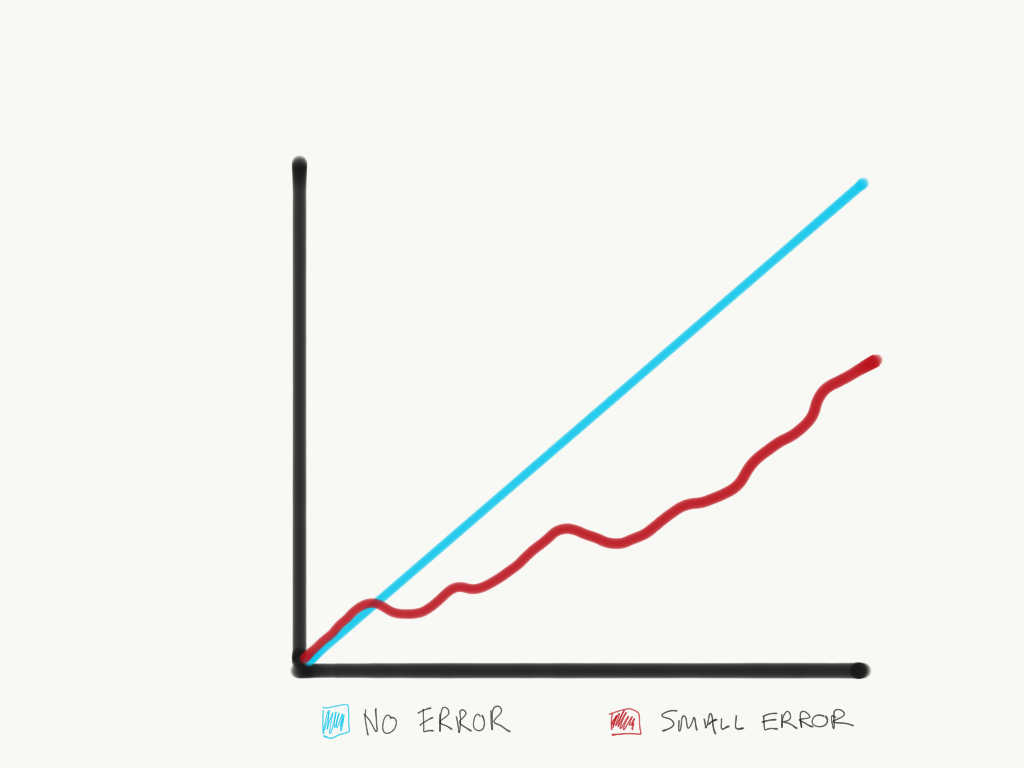
Lorenz explained that a butterfly’s wing flap represents tiny atmospheric changes. These don’t create typhoons but can alter their paths. As these small changes compound in complex systems, they can have massive implications. Lorenz concluded this makes weather prediction impossible. He wrote:
If, then, there is any error whatever in observing the present state—and in any real system such errors seem inevitable—an acceptable prediction of an instantaneous state in the distant future may well be impossible. … In view of the inevitable inaccuracy and incompleteness of weather observations, precise very-long-range forecasting would seem to be nonexistent.
Lorenz emphasized that we can’t pinpoint what exactly tips a system. The butterfly symbolizes this unknowable factor.
He challenged predictive models assuming linear, deterministic progression. Even tiny initial errors render these models useless as inaccuracies compound over time. This exponential growth of errors, known as deterministic chaos, occurs in most systems, simple or complex.
The butterfly effect is humbling. It exposes flaws in other models, showing science to be less accurate than we assume. We can’t make precise predictions due to exponential error growth.
Before Lorenz, people thought approximate initial conditions would yield approximate outcomes. In Chaos: Making a New Science , James Gleick writes:
The models would churn through complicated, somewhat arbitrary webs of equations, meant to turn measurements of initial conditions … into a simulation of future trends. The programmers hoped the results were not too grossly distorted by the many unavoidable simplifying assumptions. If a model did anything too bizarre … the programmers would revise the equations to bring the output back in line with expectation… Models proved dismally blind to what the future would bring, but many people who should have known better acted as though they believed the results.
One theoretician declared, “The basic idea of Western science is that you don’t have to take into account the falling of a leaf on some planet in another galaxy when you’re trying to account for the motion of a billiard ball on a pool table on earth.”
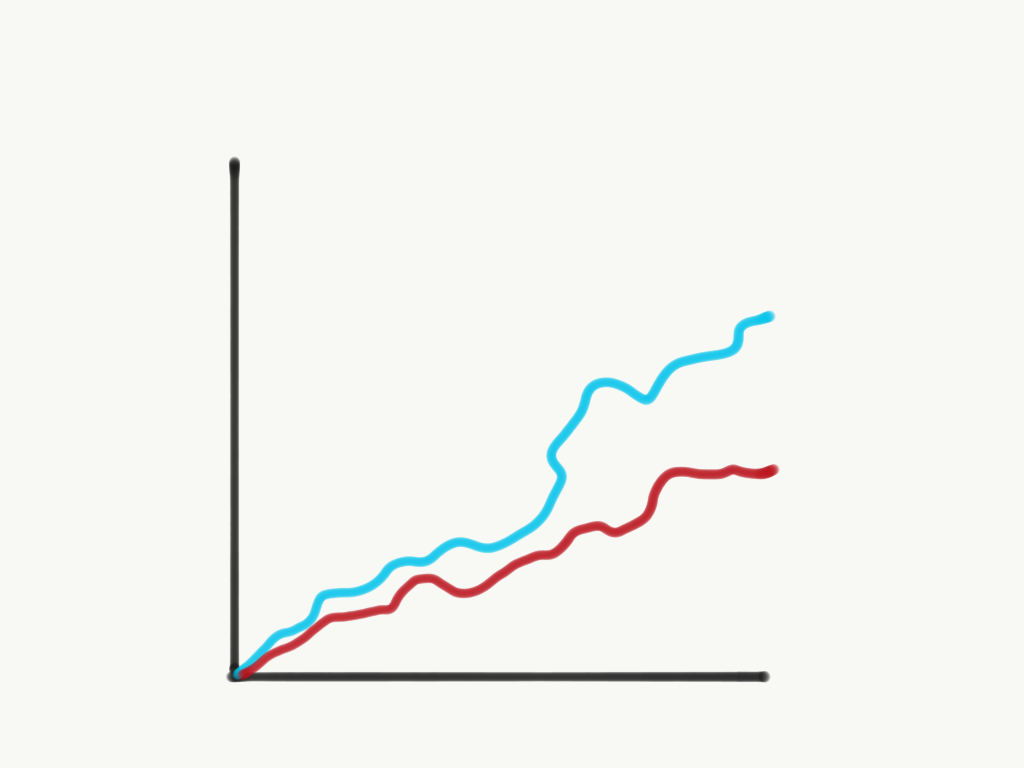
Lorenz’s work was revolutionary. It proved that without perfect knowledge of initial conditions, predictions are useless—a shocking revelation.
Early computer enthusiasts believed machines would unlock complex systems, enabling accurate predictions. After millennia of being weather’s slaves, humans craved control. Lorenz’s innocent discovery shattered this dream, sending ripples far beyond meteorology.
Ray Bradbury, the Butterfly Effect, and the Arrow of Time
Ray Bradbury’s A Sound of Thunder predates chaos theory and the butterfly effect. Set in 2055, it follows Eckels, who time-travels 65 million years to hunt a dinosaur. Despite warnings, he steps off the path during the hunt, panicked by a T. Rex. Upon return to 2055, they find the world altered: language has changed, and a dictator rules. Eckels discovers a crushed butterfly on his boot, realizing his misstep changed the future. Bradbury writes:
Eckels felt himself fall into a chair. He fumbled crazily at the thick slime on his boots. He held up a clod of dirt, trembling, “No, it cannot be. Not a little thing like that. No!” Embedded in the mud, glistening green and gold and black, was a butterfly, very beautiful and very dead. “Not a little thing like that! Not a butterfly!” cried Eckels. It fell to the floor, an exquisite thing, a small thing that could upset balances and knock down a line of small dominoes and then big dominoes and then gigantic dominoes, all down the years across Time. Eckels’ mind whirled. It couldn’t change things. Killing one butterfly couldn’t be that important! Could it?
Bradbury envisioned the passage of time as fragile and liable to be disturbed by minor changes.
Since A Sound of Thunder’s publication, physicists have debated its accuracy. While time travel remains impossible, the story raises questions about time’s nature and determinism.
Physicists discuss the Arrow of Time— entropy’s irreversible progression . As time advances, matter becomes more chaotic, never spontaneously reverting to its original state. A broken egg stays broken. This gives us our sense of past, present, and future.
Let us draw an arrow arbitrarily. If as we follow the arrow we find more and more of the random element in the state of the world, then the arrow is pointing towards the future; if the random element decreases the arrow points towards the past. That is the only distinction known to physics. This follows at once if our fundamental contention is admitted that the introduction of randomness is the only thing which cannot be undone.
Time, as we perceive it, exists due to entropy. If entropy is irreversible, time exists. Our best measure of time is entropy. If time is a journey towards chaos, small changes could indeed amplify that chaos, affecting the future.
We’re unsure if entropy creates time or vice versa. Thus, we can’t know if changing the past would alter the future. Would a crushed butterfly really shift entropy’s path? Was Eckels’ misstep free will or predestined? Was the dictatorial future inevitable?
These ideas—butterfly effect, chaos theory, determinism, free will, and time travel—have inspired many imaginations and resulted in films ranging from It’s a Wonderful Life to Donnie Darko . However, fiction often portrays the butterfly as a direct cause. Lorenz’s original concept emphasizes that small, unidentifiable details can tip the balance.
The Butterfly Effect in Business
In business, the butterfly effect means that tiny decisions or actions can snowball into major outcomes.
Imagine you’re starting a lemonade stand. You decide to smile at your first customer. That’s a small thing, right? But that customer tells their friends how friendly you were. Those friends come buy lemonade too. One of them happens to be the mayor’s kid. The mayor hears about your stand and mentions it in a speech. Suddenly, you’ve got lines around the block.
All from that first smile.
But it works the other way too. Maybe you’re grumpy to that first customer. They tell their friends to avoid your stand. Business dries up before it even starts.
The key is, you often can’t predict which small action will lead to big changes. That’s why in business, every detail matters. How you treat each customer, how you write each email, how you design your product – it could all have outsized effects. (Read more in The Physics of Relationships )
This isn’t just true for small businesses. Look at big tech companies. Facebook started as a way for college students to connect. Nobody could have predicted it would change global politics. But small decisions early on – like expanding to more colleges, or adding the News Feed – set off chain reactions that led to huge consequences.
The butterfly effect teaches us two important lessons for business:
- Pay attention to details. Small things matter more than you think.
- Be adaptable. Since you can’t predict everything, you need to be ready to adjust when those small changes start causing big effects.
Remember, in business, as in life, there’s no such thing as a small decision. Everything you do could be the butterfly’s wings that start a hurricane.
The Butterfly Effect in Economics
The global economy can be considered a single system. Much like a giant game of dominoes, one small change can set off a chain reaction that affects everyone.
Benoit Mandelbrot began applying the butterfly effect to economics several decades ago. In a 1999 article for Scientific American, he explained his findings. Mandelbrot saw how unstable markets could be, and he cited an example of a company that saw its stock drop 40% in one day, followed by another 6%, before rising by 10%—the typhoon created by an unseen butterfly.
When Benoit looked at traditional economic models, he found that they did not even allow for such events. Standard models denied the existence of dramatic market shifts. In Scientific American , he wrote:
According to portfolio theory, the probability of these large fluctuations would be a few millionths of a millionth of a millionth of a millionth. (The fluctuations are greater than 10 standard deviations.) But in fact, one observes spikes on a regular basis—as often as every month—and their probability amounts to a few hundredths.
If these changes are unpredictable, what causes them?
Mandelbrot’s answer lay in his work on fractals. A simple definition of fractals comes from Mandelbrot himself: “A fractal is a geometric shape that can be separated into parts, each of which is a reduced-scale version of the whole.” Going on to explain the connection, he writes:
In finance, this concept is not a rootless abstraction but a theoretical reformulation of a down-to-earth bit of market folklore—namely that movements of a stock or currency all look alike when a market chart is enlarged or reduced so that it fits the same time and price scale. An observer then cannot tell which of the data concern prices that change from week to week, day to day or hour to hour. This quality defines the charts as fractal curves and makes available many powerful tools of mathematical and computer analysis.”
In a talk, Mandelbrot held up his coffee and declared that predicting its temperature in a minute is impossible, but in an hour is perfectly possible. The same concept applies to markets. Even if a long-term pattern can be deduced, it is of little use to those who trade on a shorter timescale.
Mandelbrot explains how his fractals can be used to create a more useful model of the chaotic nature of the economy:
Instead, multifractals can be put to work to “stress-test” a portfolio. In this technique, the rules underlying multifractals attempt to create the same patterns of variability as do the unknown rules that govern actual markets. Multifractals describe accurately the relation between the shape of the generator and the patterns of up-and-down swings of prices to be found on charts of real market data… They provide estimates of the probability of what the market might do and allow one to prepare for inevitable sea changes. The new modeling techniques are designed to cast a light of order into the seemingly impenetrable thicket of the financial markets. They also recognize the mariner’s warning that, as recent events demonstrate, deserves to be heeded: On even the calmest sea, a gale may be just over the horizon.
In The Misbehaviour of Markets , Mandelbrot and Richard Hudson expand on financial chaos. They begin with a discussion of the infamous 2008 crash and its implications:
The worldwide market crash of autumn 2008 had many causes: greedy bankers, lax regulators and gullible investors, to name a few. But there is also a less-obvious cause: our all-too-limited understanding of how markets work, how prices move and how risks evolve. … Markets are complex, and treacherous. The bone-chilling fall of September 29, 2008—a 7 percent, 777 point plunge in the Dow Jones Industrial Average—was, in historical terms, just a particularly dramatic demonstration of that fact. In just a few hours, more than $1.6 trillion was wiped off the value of American industry—$5 trillion worldwide.
Mandelbrot and Hudson argue that the 2008 crisis partly stemmed from overconfidence in financial predictions. Model creators ignored the butterfly effect: no model, however complex, can perfectly capture initial conditions or compound effects of small changes.
Before Lorenz’s work, people thought they could predict and control the weather. Similarly, they believe they could do this with markets until some unexpected event proves otherwise. Wall Street banks, trusting their models, felt safe borrowing huge sums for what was essentially gambling (without knowing they were gambling). Their models said a crash was impossible. It happened anyway. While we learn from our mistakes and think we’ve finally figured it out this time, we are eventually proven wrong. All models are false .
Mandelbrot and Hudson note that predictive models treat markets as “risky but ultimately… manageable.” Like weather forecasts, economic predictions use approximate initial conditions—which we now know are nearly useless. They write:
[C]auses are usually obscure. … The precise market mechanism that links news to price, cause to effect, is mysterious and seems inconsistent. Threat of war: Dollar falls. Threat of war: Dollar rises. Which of the two will actually happen? After the fact, it seems obvious; in hindsight, fundamental analysis can be reconstituted and is always brilliant. But before the fact, both outcomes may seem equally likely.
In the same way that apparently similar weather conditions can create drastically different outcomes, apparently similar market conditions can create drastically different outcomes.
We cannot see the extent to which the economy is interconnected, and we cannot identify where the butterfly lies. Mandelbrot and Hudson disagree with the view of the economy as separate from other parts of our world. Everything connects:
No one is alone in this world. No act is without consequences for others. It is a tenet of chaos theory that, in dynamical systems, the outcome of any process is sensitive to its starting point—or in the famous cliché, the flap of a butterfly’s wings in the Amazon can cause a tornado in Texas. I do not assert that markets are chaotic…. But clearly, the global economy is an unfathomably complicated machine. To all the complexity of the physical world… you add the psychological complexity of men acting on their fleeting expectations….
Why do people prefer to blame crashes (such as the 2008 credit crisis) on the folly of those in the financial industry? Jonathan Cainer provides a succinct explanation:
Why do we love the idea that people might be secretly working together to control and organize the world? Because we do not like to face the fact that our world runs on a combination of chaos, incompetence, and confusion.
Historic Examples of the Butterfly Effect
A very small cause which escapes our notice determines a considerable effect that we cannot fail to see, and then we say the effect is due to chance. If we knew exactly the laws of nature and the situation of the universe at the initial moment, we could predict exactly the situation of that same universe at a succeeding moment. But even if it were the case that the natural laws had no longer any secret for us, we could still only know the initial situation approximately. If that enabled us to predict the succeeding situation with the same approximation, that is all we require, and we should say that the phenomenon had been predicted, that it is governed by laws. But it is not always so; it may happen that small differences in the initial conditions produce very great ones in the final phenomena. A small error in the former will produce an enormous error in the latter. Prediction becomes impossible, and we have the fortuitous phenomenon. Jules Henri Poincaré (1854–1912)
The butterfly effect shows how tiny details can lead to massive changes. Here are a few examples:
- The bombing of Nagasaki: Cloud cover over the original target, Kuroko, led to Nagasaki being bombed instead. A simple weather change altered history.
- Hitler’s art school rejection: Twice rejected from art school at the Academy of Fine Arts in Vienna, Hitler’s path changed from aspiring artist to dictator. Imagine if he’d been accepted.
- Archduke Franz Ferdinand’s assassination: A wrong turn by his driver put him in the path of his assassin. This sparked World War I.
- The Chernobyl disaster: Three workers prevented a second explosion that could have made half of Europe uninhabitable. Their actions limited the catastrophe.
- The Cuban Missile Crisis: One Russian officer, Vasili Arkhipov, vetoed launching a nuclear torpedo. He likely prevented World War III.
These examples show how fragile our world is. Small events can have enormous consequences.
We often think we can predict and control complex systems like weather or the economy. The butterfly effect proves we can’t. These systems are chaotic and can change suddenly.
At best, we can try to create good starting conditions and be aware of potential catalysts. But we can’t control or predict outcomes perfectly. Thinking we can only sets us up for failure.
MIT Technology Review
- Newsletters
When the Butterfly Effect Took Flight
- Peter Dizikes archive page
On a winter day 50 years ago, Edward Lorenz, SM ‘43, ScD ‘48, a mild-mannered meteorology professor at MIT, entered some numbers into a computer program simulating weather patterns and then left his office to get a cup of coffee while the machine ran. When he returned, he noticed a result that would change the course of science.

The computer model was based on 12 variables, representing things like temperature and wind speed, whose values could be depicted on graphs as lines rising and falling over time. On this day, Lorenz was repeating a simulation he’d run earlier—but he had rounded off one variable from .506127 to .506. To his surprise, that tiny alteration drastically transformed the whole pattern his program produced, over two months of simulated weather.
The unexpected result led Lorenz to a powerful insight about the way nature works: small changes can have large consequences. The idea came to be known as the “butterfly effect” after Lorenz suggested that the flap of a butterfly’s wings might ultimately cause a tornado. And the butterfly effect, also known as “sensitive dependence on initial conditions,” has a profound corollary: forecasting the future can be nearly impossible.
Like the results of a wing’s flutter, the influence of Lorenz’s work was nearly imperceptible at first but would resonate widely. In 1963, Lorenz condensed his findings into a paper, “Deterministic Nonperiodic Flow,” which was cited exactly three times by researchers outside meteorology in the next decade. Yet his insight turned into the founding principle of chaos theory, which expanded rapidly during the 1970s and 1980s into fields as diverse as meteorology, geology, and biology. “It became a wonderful instance of a seemingly esoteric piece of mathematics that had experimentally verifiable applications in the real world,” says Daniel Rothman, a professor of geophysics at MIT.
Read “Deterministic Nonperiodic Flow,” Lorenz’s ground-breaking 1963 paper in the Journal of Atmospheric Sciences, here (pdf). For links to Lorenz’s papers, visit here .
As many researchers would recognize by the 1980s, Lorenz’s work also challenged the classical understanding of nature. The laws that Isaac Newton published in 1687 had suggested a tidily predictable mechanical system—the “clockwork universe.” Similarly, the French mathematician Pierre-Simon Laplace asserted in his 1814 volume A Philosophical Essay on Probabilities that if we knew everything about the universe in its current state, then “nothing would be uncertain and the future, as the past, would be present to [our] eyes.”
Unpredictability plays no role in the universe of Newton and Laplace; in a deterministic sequence, as Lorenz once wrote, “only one thing can happen next.” All future events are determined by initial conditions. Yet Lorenz’s own deterministic equations demonstrated how easily the dream of perfect knowledge founders in reality. That the tiny change in his simulation mattered so much showed, by extension, that the imprecision inherent in any human measurement could become magnified into wildly incorrect forecasts.
“It was philosophically very shocking,” says Steven Strogatz, a professor of applied mathematics at Cornell and author of Nonlinear Dynamics and Chaos . “Determinism was equated with predictability before Lorenz. After Lorenz, we came to see that determinism might give you short-term predictability, but in the long run, things could be unpredictable. That’s what we associate with the word ‘chaos.’ ”
Weather, war, and computers
Edward Norton Lorenz was a lifelong New Englander, born in 1917 in West Hartford, Connecticut. As a boy, he once recounted, he was “fascinated by changes in the weather.” He received his undergraduate degree in mathematics from Dartmouth in 1938 and a master’s in the subject from Harvard in 1940. When the United States entered World War II, he joined the Army Air Corps and filled a growing military need by training as a weather forecaster at MIT, where the nation’s first meteorology curriculum had been established in 1928. After the war, he earned a doctorate in meteorology at MIT and largely stayed at the Institute until his death in 2008.
The military’s meteorology program that Lorenz completed had been developed by Carl-Gustaf Rossby, a former MIT professor who was an advocate of dynamic meteorology. That approach treated the atmosphere as one large system to be analyzed using the equations of fluid mechanics. “With my mathematical background, I naturally found dynamic meteorology to my liking,” Lorenz later wrote. Into the 1950s, however, dynamic meteorology did not produce reliable forecasts. A less scientifically sophisticated alternative called synoptic forecasting, which analyzed the weather by studying atmospheric structures such as high- and low-pressure systems, produced better results.
Lorenz and others began experimenting with statistical forecasting, which relied on computers to develop forecasting models by processing observational data on such things as temperature, pressure, and wind. By the late 1950s, he was using a computer to run complex simulations of weather models that he used to evaluate statistical forecasting techniques. Some of his simulations, however, were too regular to be realistic; they yielded periodic patterns, or precisely repeating sequences. As he knew, that wasn’t how the weather really worked. When his 1961 simulation deviated from its expected path, he saw that a change as small as the one he’d made in rounding a number can create a vast difference over time. Lorenz realized that sensitivity to initial conditions is what causes nonperiodic behavior; the more a system has the capacity to vary, the less likely it is to produce a repeating sequence. This sensitivity makes weather very difficult to forecast far in advance.
Confirming this intuition was a set of equations, using just three variables to represent the movement of a heated gas in a box, that Lorenz employed in his landmark 1963 paper. Even such a drastically simplified model produced “solutions which never repeat their past history exactly,” he noted. “Two states differing by imperceptible amounts may eventually evolve into two considerably different states … [meaning] an acceptable prediction of an instantaneous state in the distant future may well be impossible.”
Lorenz realized that if such a simple system was so sensitive to initial conditions, he had discovered something fundamental. “Ed’s work on chaos theory was a beautiful example of very clear reductionist thinking,” says Kerry Emanuel ‘76, PhD ‘78, an atmospheric scientist at MIT who for years had an office next door to Lorenz.
The principle of chaos drove home the importance of nonlinearity, a characteristic of many natural systems. If a group of 100 lions has a net gain of 10 members a year, that increase in population size can be plotted on a graph as a straight line. A group of mice that doubles annually, on the other hand, has a nonlinear growth pattern; on a graph, the population size will curve upward. After a decade, the difference between a group that started with 22 mice and one that started with 20 mice will have ballooned to more than 2,000. Given that type of growth pattern, the real-life pressures on species—normal death rates, epidemics, limited resources—will often cause their population sizes to rise and fall chaotically. While not all nonlinear systems are chaotic, all chaotic systems are nonlinear, as Lorenz observed.
Yet chaos is not randomness. One way that he demonstrated this was through the equations representing the motion of a gas. When he plotted their solutions on a graph, the result—a pair of linked oval-like figures—vaguely resembled a butterfly. Known as a “Lorenz attractor,” the shape illustrated the point that almost all chaotic phenomena can vary only within limits.
By 1965, Lorenz had pinpointed what he considered the primary source of nonlinearity in weather: advection, the horizontal and uneven wind-induced movement of heat, moisture, and other atmospheric properties. He had also concluded that the butterfly effect made it impossible to accurately forecast the weather two weeks ahead. Small errors regarding large-scale weather features, such as recording an imprecise location for a storm, would double in magnitude in about three days. Errors in observing small-scale weather features, such as imprecisely recording locations of individual clouds, could turn into errors on a larger scale within a day.
Meanwhile, a few scientists had begun grappling with Lorenz’s discoveries. Joseph Pedlosky ‘59, SM ‘60, PhD ‘63, now a scientist emeritus at the Woods Hole Oceanographic Institution, was a new assistant professor at MIT studying nonlinear eddying motion in the ocean and atmosphere when he saw Lorenz speak and realized that his meteorological and oceanographic models demonstrated chaos. Lorenz’s insight “allowed me to talk about chaotic and aperiodic behavior, and that was very exciting,” he says.
It took longer for chaos theory spread to other disciplines; in the mid-1970s, the biologist Robert May first suggested that populations of species fluctuate in chaotic fashion. Today we recognize that such disparate phenomena as a heartbeat and the erosion of a riverbed display chaotic behavior. Many scientists—including Emanuel—now rank chaos theory alongside relativity and quantum theory among the great scientific revolutions of the 20th century.
Dances with coyotes
A legend in the classroom, Lorenz earned students’ votes as the meteorology department’s best teacher year after year. “Eventually, the award was discontinued because no one else ever won it,” Emanuel recalls. Yet Lorenz’s research went largely unnoticed for a decade. “Ed was a very shy man who was as far from being a self-promoter as you could possibly imagine,” says Emanuel. “He didn’t go off giving scientific talks a lot.”
Colleagues finally persuaded Lorenz to give his ideas a wider airing at the 1972 conference of the American Association for the Advancement of Science. His paper “Predictability: Does the Flap of a Butterfly’s Wings in Brazil Set Off a Tornado in Texas?” introduced the butterfly image, courtesy of meteorologist Philip Merilees, who came up with the title. Previously, Lorenz had used the more prosaic example of a seagull causing a storm. In 1987, the term “butterfly effect” took flight in James Gleick’s best seller Chaos: Making a New Science —and Lorenz’s discovery reached a general audience.
Gleick’s book made a scientific celebrity of Lorenz. Rothman and Strogatz, then a professor at MIT, began inviting him to present annual guest lectures to awed students. “Every year he would give a new lecture on what he had done in the last year,” says Rothman. “It was astonishing. In the last five years of his life, the lectures started getting better. Deeper. He was very into it.” But Lorenz would deflect students’ questions about his old breakthroughs.
Modest and soft-spoken even around familiar colleagues, Lorenz could be more voluble about his family or the outdoors; he was a lifelong hiker and cross-country skier. “If you talked to him about the White Mountains of New Hampshire, he would completely open up,” says Emanuel. One time, improbably, Emanuel ran into Lorenz and his wife, Jane, on vacation in the Southern California desert. They all went to a nature preserve, where Emanuel saw a group of coyotes napping under a tree. On a whim, he started clapping and hollering to wake up the coyotes, but they did not stir.
“All of a sudden I heard this really loud coyote yelp coming from right behind me,” recounts Emanuel. “I shot up about three feet in the air. Then I turned around and it was Ed! He had snuck up behind me, and he knew how to talk to the coyotes. He woke them up right away, and they started carrying on some kind of conversation with him. This huge sound, coming from this guy who you ordinarily had a hard time hearing.”
Pop goes the butterfly
The butterfly effect even filtered into pop culture. “A butterfly can flutter its wings over a flower in China and cause a hurricane in the Caribbean,” says Robert Redford’s character in the 1990 movie Havana , adding that scientists “can even calculate the odds.” But they can’t, as Lorenz made clear in his 1990 book, The Essence of Chaos . Nature’s interdependent chains of cause and effect are usually too complex to disentangle. So we cannot say precisely which butterfly, if any, may have created a given storm. Moreover, as Lorenz stated in his 1972 paper, “If the flap of a butterfly’s wings can be instrumental in generating a tornado, it can equally well be instrumental in preventing a tornado.” And that would be impossible for us to know.
Lorenz would thus equivocate when asked whether a butterfly can really cause a tornado. “Even today I am unsure of the proper answer,” he said in a 2008 lecture. The value of the question is the larger point it evokes: that nature is highly sensitive to tiny changes. “The idea has now entered the everyday vision of many scientists across all disciplines,” says Rothman. “They understand that some things are chaotic, and that there’s exponential divergence from initial conditions. They may not voice it, but they know it because it’s in the air. That’s the sign of a great achievement.”
Lorenz’s work has also led to improvements in weather forecasting, which he credited to three things: wider data collection, better modeling, and “the recognition of chaos” in the weather, leading to what’s called ensemble forecasting. In this technique, forecasters recognize that measurements are imperfect and thus run many simulations starting from slightly different conditions; the features these scenarios share form the basis of a more reliable “consensus” forecast.
Imagining a Lorenz Institute
Beyond forecasting, Lorenz was “keenly interested in climate,” Emanuel says, and made it clear that even if tracing the effects of small things is too hard to let anyone predict the weather a month ahead, the effects of large things, like the increase of carbon dioxide in the atmosphere, are not hard to discern. “He did not think that climate change is wholly unpredictable and would have been amused at those who say that because we cannot predict the weather beyond a few days, there is no possibility of predicting climate,” he says.
Today, Emanuel and Rothman are working with MIT fund-raisers to find backing for a climate research center that they would like to call the Lorenz Institute. Emanuel thinks that would help compensate for the fact that Lorenz never held a titled professorship, despite his many professional awards. “He was a classic example of a prophet not honored in his own country here at MIT,” he says bluntly.
The proposed Lorenz Institute, Emanuel says, would focus on pure research in service to a quest for “underlying principles in climate that make it easier to understand.” As Lorenz wrote in 2005, “It has often been noted that a piece of pure research can lead, sometimes much later, to a practical application very likely not anticipated by the scientist performing the pure research.”
Indeed, it is hardly fanciful to imagine Lorenz’s insight as one such brief intellectual flutter, setting off currents that still affect the scientific atmosphere. Perhaps on some future winter day, another MIT climate scientist, ensconced in the Lorenz Institute, will return from a coffee break and instigate a breakthrough just as profound.
Keep Reading
Most popular.

What is AI?
Everyone thinks they know but no one can agree. And that’s a problem.
- Will Douglas Heaven archive page

How to fix a Windows PC affected by the global outage
There is a known workaround for the blue screen CrowdStrike error that many Windows computers are currently experiencing. Here’s how to do it.
- Rhiannon Williams archive page

A controversial Chinese CRISPR scientist is still hopeful about embryo gene editing. Here’s why.
He Jiankui, who went to prison for three years for making the world’s first gene-edited babies, talked to MIT Technology Review about his new research plans.
- Zeyi Yang archive page

Google DeepMind’s new AI systems can now solve complex math problems
AlphaProof and AlphaGeometry 2 are steps toward building systems that can reason, which could unlock exciting new capabilities.
Stay connected
Get the latest updates from mit technology review.
Discover special offers, top stories, upcoming events, and more.
Thank you for submitting your email!
It looks like something went wrong.
We’re having trouble saving your preferences. Try refreshing this page and updating them one more time. If you continue to get this message, reach out to us at [email protected] with a list of newsletters you’d like to receive.
Advertisement
What Is the Butterfly Effect and How Do We Misunderstand It?
- Share Content on Facebook
- Share Content on LinkedIn
- Share Content on Flipboard
- Share Content on Reddit
- Share Content via Email
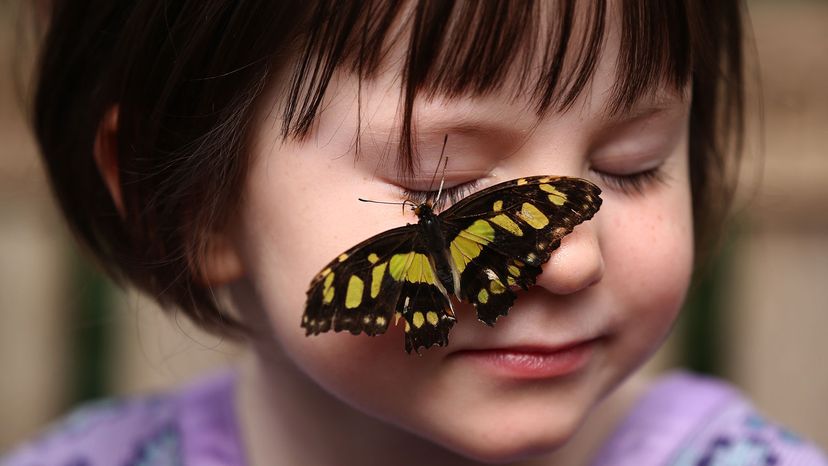
If you thought the butterfly effect was just a terrible 2004 movie starring Ashton Kutcher and Amy Smart, think again. The film was just a new take on a much older concept.
The butterfly effect is the idea that small, seemingly trivial events may ultimately result in something with much larger consequences – in other words, they have non-linear impacts on very complex systems. For instance, when a butterfly flaps its wings in India, that tiny change in air pressure could eventually cause a tornado in Iowa.
In the aforementioned film, Kutcher's character finds a way to travel back in time to his childhood. Every time he makes this journey, he does small things differently – but those tiny changes wind up having major (and horrifying) effects on his adult life.
The term "butterfly effect" was coined in the 1960s by Edward Lorenz , a meteorology professor at the Massachusetts Institute of Technology, who was studying weather patterns. He devised a model demonstrating that if you compare two starting points indicating current weather that are near each other, they'll soon drift apart – and later, one area could wind up with severe storms, while the other is calm.
At the time, weather statisticians thought you should be able to predict future weather based on looking at historical records to see what had happened when conditions were the same as they are now. Lorenz was skeptical. He was running a computer program to test various weather simulations and he discovered that rounding off one variable from .506127 to .506 dramatically changed the two months of weather predictions in his simulation.
His point was that long-range weather forecasting was virtually impossible, in large part because humans don't have the ability to measure nature's incredible complexity. There are simply too many minute variables that can act as pivot points, cascading into much bigger consequences.
As science journalist Peter Dizikes wrote in the Boston Globe :
So, while people often think the butterfly effect means that tiny changes can have big consequences (and we can track this progression to see what change caused what), Lorenz was trying to say that we can't track these changes. We don't really know exactly what would cause a weather pattern to go one way over another.
Lorenz called this "sensitive dependence on initial conditions" when he introduced his work to the public in a 1963 paper titled, " Deterministic Nonperiodic Flow ." (The term "butterfly effect" he coined in later speeches about the topic.) The paper was rarely cited by other researchers – at least, at first.
The Butterfly Effect and Chaos Theory
Later, other scientists realized the importance of Lorenz's discovery. His insights laid the foundation for a branch of mathematics known as chaos theory , the idea of trying to predict the behavior of systems that are inherently unpredictable .
You can see instances of the butterfly effect every day. Weather's just one example. Climate change is another. Because, as it turns out, warming climates are impacting – appropriately enough – species of alpine butterflies in North America.
"Climate change is expected to have some large impacts, such as too hot for some species or too dry for others, but there are a nearly infinite amount of smaller, indirect effects that will also occur," emails Alessandro Filazzola, a community ecologist and data scientist, and post-doctorate fellow at the University of Alberta.
"In our research , we looked at one of those indirect effects and saw how future climate will slowly cause mismatch in spatial location of a butterfly and its host plant. As a caterpillar, this butterfly only feeds on this type of plant species so any mismatch in range will cause a decline in the butterfly."
He adds that if we were to pause for a moment and think of all the other species in a food web, suddenly there is the potential of many species being affected – not just one small butterfly. That's the butterfly effect in action, on a large scale.
"For instance, the animals that feed on that butterfly and the animals that feed on those animals, or what about other insect species all together, or even other butterflies? Our project was quite controlled because our butterfly species only eats the one type of plant, but the logic is maintained when you consider the entire ecosystem (just trickier to measure)."
When we start to consider how one small change can quickly result in a lot of unintended consequence, there's naturally cause for concern.
For example, limiting the construction of hydroelectric dams might reduce certain types of environmental damage. But in eliminating this potential source of clean energy, we tend to fall back on fossil fuels that accelerate global warming. Biofuel subsidies , meant to reduce our dependence on fossil fuels, have increased rainforest destruction, freshwater waste and food price increases that have affected the poorest segments of the human population.
How can we possibly do much of anything in our lives, then, without fear of causing harm? Filazzola returns to the butterflies as an example.
"Better understanding of indirect effects is probably one of the most important steps in trying to mitigate these effects. More simply though, just keeping nature as close to its original state is really the most important thing," he says. "Ecosystems are vastly complex, and the loss of a single species might not have a perceived effect, but it could have cascading effects on the entire system." For instance, re-introducing the wolf to Yellowstone Park increased beaver populations, increased the numbers of willow and aspen plants and provided food for birds, coyotes and bears, among other benefits.
Then, we consider how the butterfly effect can play into our individual lives. With nearly 8 billion humans on the planet, can just one person make changes that echo around Earth?
Filazzola says that he does wonder about the indirect effects of his personal actions.
"The items I buy, the people I interact with, the things I say, I believe can each have their cascading effects that ripple through society," he says. "That is why it is important to try and be a good person, to create a positive influence. One thing I also think about is how these indirect effects are often not as small and removed as I believe many would think."
NASA leverages the butterfly effect to guide spacecraft . Launched in 1978, the International Cometary Explorer became the first spacecraft to intercept a comet, passing through the tail of comet Giacobini-Zinner and collecting valuable data. They harnessed chaotic systems, calculating that just a tiny bit of fuel, used at an exact moment, would zip the craft at high speed to the right place at the right time – and it worked perfectly.
Frequently Answered Questions
What is the butterfly effect.
Please copy/paste the following text to properly cite this HowStuffWorks.com article:


George R.R. Martin Appears To Have Issued A Warning About Future ‘HotD’ Seasons After Ranting About Blood, Cheese, And The Butterfly Effect
(UPDATE: 9/4/2024 5:15 EST – Martin has deleted the blog post containing the rant described below.)
Spoilers For House of the Dragon will be found below.
About a week ago, George R.R. Martin promised/threatened to blog about everything that he feels has gone wrong on the current Game of Thrones prequel series. His turnaround time on such vows might be improving, but also, it feels like GRRM is only getting started because he did indeed go on a lengthy rant about HotD , but he centers his concern upon Season 2’s “A Son for a Son” episode, otherwise known as the Blood and Cheese atrocity.
Martin does not hold back and delivers 1,800+ words on the subject, and much of his discussion revolves around the chaos theory-related “Butterfly Effect,” which holds that the tiniest aberrations/alterations in events can spark wide-ranging, even destructive impacts on the whole. His essay is actually rather wild, considering that HotD is halfway finished and multiple other GoT spin offs are in the works (with A Knight of the Seven Kingdoms arriving in 2025), so Martin needs to preserve his working relationship with HBO. Yet Martin’s displeasure with a certain Blood and Cheese change led him to conclude his (SPOILER FILLED) essay like this :
“And there are larger and more toxic butterflies to come, if HOUSE OF THE DRAGON goes ahead with some of the changes being contemplated for seasons 3 and 4…”
Very dramatic stuff for sure. He’s essentially upset about the absence of Maelor, who is the third child of Helaena and Aegon II Targaryen yet does not appear in the show for what Martin suggests are budget-related reasons. Martin explains why he acquiesced to the omission under the understanding that Maelor would appear in the third season, and then this happened:
“Sometime between the initial decision to remove Maelor, a big change was made. The prince’s birth was no longer just going to be pushed back to season 3. He was never going to be born at all. The younger son of Aegon and Helaena would never appear.”
I will not even attempt to summarize the rest of Martin’s layered argument, but he outlines the many reasons why he believes that removing Maelor from the story will smash the emotional resonance of significant future HotD events into smithereens. He also publicly (albeit vaguely) calls out future story decisions from showrunner Ryan Condal by referring to “Ryan’s outline for season 3,” and overall, man, this predicts serious tension between Martin and the prequel spin off’s creatives.
Of course, Martin is not known for mincing words, so perhaps this dust-up will blow over with time. However, if you are looking for a GRRM-related show that does not seem to upset him, he’s a producer on AMC’s Dark Winds , which recently found a new audience on Netflix and will be moving into a third season in 2025.
(Via GRRM’s NotABlog Blog )

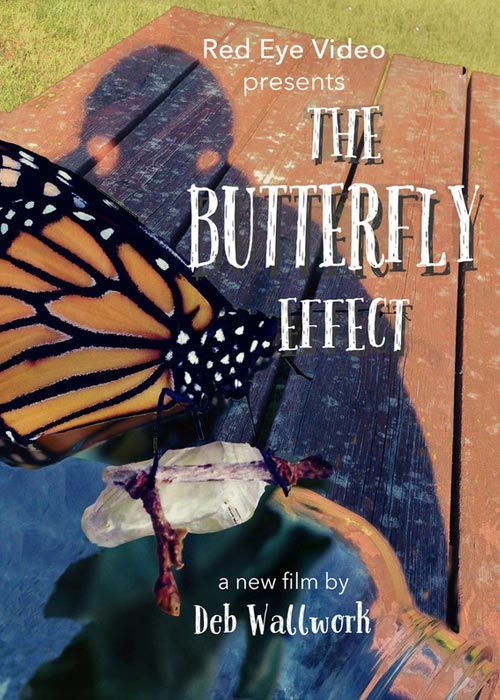
The Butterfly Effect
Showtime: Sun , Feb 12th @ 4:00 PM
Runtime: 00:49:49
Directed By: Deb Wallwork, Janet Bayliss
Genre: Nature/Environment
Filmmaker In Attendance
Director Bios:
Deb Wallwork, Janet Bayliss
Deb Wallwork is a documentary filmmaker. Best known for her short film, C. Beck, about a woodcut artist, she has won numerous awards including the 2004 Independent Lens Grand Prize, a Cine Gold Eagle, Best Feature Documentary from the the American Indian Film Festival, and has had her work broadcast nationally on PBS.
Her work has also screened at major festivals institutions including the Plains Art Museum, the Minnesota Historical Society, Minneapolis Institute of Arts, Buffalo Bill Historical Center, the National Museum of the American Indian, and the American Museum of Natural History in New York.
For her latest film The Butterfly Effect, she received a Legacy Grant from the Minnesota State Arts and Cultural Fund. This documentary is a humorous and lyrical essay film that features portraits of rural people who are saving the monarch butterfly, one milkweed at a time.
Deb has an M.F. A. from the School of the Art Institute in Chicago. She currently lives in Fergus Falls, MN

IMAGES
VIDEO
COMMENTS
As I stated previously in the beginning of this essay, this film allows for an interactive and thought- provoking entertainment outlet. Audiences literally place themselves and their experiences into framework of the movie (DomSaint,2012). ... A Movie Analysis of the Butterfly Effect, a Science Fiction Film by Eric Bress and J. Mackye Gruber ...
The Butterfly Effect (2004) Film Summary & Plot Synopsis "The Butterfly Effect" is a sci-fi thriller featuring Ashton Kutcher, John Patrick Amedori, Logan Lerman, Irina Gorovaia, Amy Smart, Eldon Henson, Jesse James, and Melora Walters. The movie begins with a patient hiding under a table and writing a note, saying that if someone finds it ...
Views. 2695. This paper revolves around the four main psychological aspects of the 2004 movie The Butterfly Effect which are memory retrieval in Evan, trauma in the characters, depression, and Evan's therapy. In memory we will look through the protagonist's, Evan, past and how he represses his memory and retrieves them back as adult.
The Butterfly Effect is a 2004 American science fiction thriller film written and directed by Eric Bress and J. Mackye Gruber.It stars Ashton Kutcher, Amy Smart, Eric Stoltz, William Lee Scott, Elden Henson, Logan Lerman, Ethan Suplee, and Melora Walters.The title refers to the butterfly effect.. Kutcher plays 20-year-old college student Evan Treborn, [3] who experiences blackouts and memory ...
The Butterfly Effect. Drama. 113 minutes ‧ R ‧ 2004. Roger Ebert. January 23, 2004. 4 min read. Chaos theory teaches us that small events can have enormous consequences. An opening title informs us that butterfly flapping its wings in Asia could result in a hurricane halfway around the world. Yes, although given the number of butterflies ...
Evan travels back into his mother's womb and strangles himself with the umbilical cord. Said to be the original ending but, because it did poorly with the screening audience, the theatrical ending was chosen for cinema release. The Director's Cut has quite a few more additional scenes. Detailed comparison between Theatrical and Director's Cut.
Although the memory occurs quickly, it still expresses significantly vivid details of the event. A flashbulb memory is triggered by a surprising or consequential event. In the movie, The Butterfly Effect, Evan experiences flashbulb memories when he re-reads his journal. He is able to feel the emotions that occurred within that memory and is ...
Open Document. Memory, Therapy, Depression and Therapy in the Butterfly Effect Psychology 155-22 Professor Perno Hao Lam November 20, 2012 Abstract This paper revolves around the four main psychological aspects of the 2004 movie The Butterfly Effect which are memory retrieval in Evan, trauma in the characters, depression, and Evan's therapy.
The Butterfly Effect Film Analysis Personally, I have always enjoyed movies that teach audiences something or other. Especially, movies that require deep thought to unravel the plot behind it. I remember my first time watching this film, I had to rewind it because I couldn't make the pieces...
The Butterfly Effect: Directed by Eric Bress, J. Mackye Gruber. With Ashton Kutcher, Melora Walters, Amy Smart, Elden Henson. Evan Treborn suffers blackouts during significant events of his life. As he grows up, he finds a way to remember these lost memories and a supernatural way to alter his life by reading his journal.
Tommy beats up Evan badly & prompts Evan's mom to change towns. While entertaining a girl in his dorm room, he finds that when he reads from his adolescent journals, he travels back in time, and he is able to "redo" parts of his past, thereby causing the blackouts he experienced as a child. He also remembers that during the mailbox incident ...
The Butterfly Effect. "When the monarchs hang clustered together, paralyzed by the cold, they are clasped to each other, holding the heat between them. They wait for the sun to warm them." It was cold in Maine. Cold. And the snow was heaped in dirty piles on the side of the road. And the sidewalks were icy.
Chaos Theory. The Butterfly Effect, is a movie that illustrates the life of Evan Treborn, who in stressful situations has blackouts and has no memory of the event. Later he finds that by recalling the memories, reading his journals, he can actually go back in time and change some of the horrifying events that have happened.
The Butterfly Effect 2 (2006) In the movie, Nick Larson, played by Eric Lively, stumbles upon a unique power, just like Ashton Kutcher's Treborn. By reading his late girlfriend Julie's journal, Nick can time travel. At first, Nick uses this power to fix things in his life and make his relationships better, but as he messes with the past ...
The butterfly effect is the idea that small things can have non-linear impacts on a complex system. The concept is often imagined with a butterfly flapping its wings and causing a typhoon. Of course, a single act, like a butterfly flapping its wings, cannot cause a typhoon. However, small events can serve as catalysts that alter starting ...
1902 Words8 Pages. The Butterfly Effect is a movie that is based on the idea that the main character Evan Treborn has a disorder called Dissociative Amnesia. I however believe that it may play a part but is not the main diagnosis for Evan. I believe that Evan has Dissociative Identity Disorder (DID) and the way that the movie is played out is ...
As a metaphor, the Butterfly 41 Effect is expressed as a variant of cause and effect at a distance, e.g. a butterfly's 42 flapping wings in Brazil can cause a tornado in Texas. While the birth ...
The Butterfly Effect, is a movie that illustrates the life of Evan Treborn, who in stressful situations has blackouts and has no memory of the event. Later he finds that by recalling the memories, reading his journals, he can actually go back in time and change some of the horrifying events that have happened.
Most of you know about the Butterfly Effect, I assume. Yes, there was a movie with that title a few years back. It's a familiar concept in chaos theory as well. But most science fiction fans were first exposed to the idea in Ray Bradbury's classic time travel story, "A Sound of Thunder," wherein a time traveler from the present panics ...
When the Butterfly Effect Took Flight. Half a century ago, Edward Lorenz, SM '43, ScD '48, overthrew the idea of the clockwork universe with his ground-breaking research on chaos. Now MIT ...
If you thought the butterfly effect was just a terrible 2004 movie starring Ashton Kutcher and Amy Smart, think again. The film was just a new take on a much older concept. The butterfly effect is the idea that small, seemingly trivial events may ultimately result in something with much larger consequences - in other words, they have non-linear impacts on very complex systems.
There is a movie called " The Butterfly Effect ". It is about a student named Evan Treborn, whose played by Ashton Kutcher. When Evan was going up he had serious headaches until it caused blackouts. He tried writing in his journals to help him remember. However, the journals could not help him figure out what he missed.
George R.R. Martin Appears To Have Issued A Warning About Future 'HotD' Seasons After Ranting About Blood, Cheese, And The Butterfly Effect Kimberly Ricci Film/TV Editor Twitter September 4, 2024
For her latest film The Butterfly Effect, she received a Legacy Grant from the Minnesota State Arts and Cultural Fund. This documentary is a humorous and lyrical essay film that features portraits of rural people who are saving the monarch butterfly, one milkweed at a time. Deb has an M.F. A. from the School of the Art Institute in Chicago.